

HUD2023-002913
Brodie Fraser
[FYI request #23729 email] Tēnā koe Brodie
Thank you for your email of 7 August 2023 requesting the following information under the Official
Information Act 1982 (the Act):
...copies of any contract reports, including narrative reports, prepared by housing providers
(including emergency housing, transitional housing, housing first, rapid re-housing, and
community housing) contracted by HUD, who have clients under 25 or support whānau
with children, for the 2022-2023 financial year? I am uninterested in financial reporting or
any personal/identifying details of clients or staff. I am particularly interested in contract
reports that give information relating to:
•
Approaches providers have identified as being effective (particularly any that relate
to children and young people under 25)
•
What doesn’t work, or hinders their ability to effectively carry out their work
(particularly in terms of contracting requirements and constraints)
•
Suggestions of improvements that could be made, or opportunities to improve
support and delivery
•
What extra support providers are giving to clients beyond what they’re contracted
to deliver
•
Generalised successes and challenges for clients and the interventions or activities
linked to these
•
Generalised client satisfaction and generalised reasons for exiting services
On 21 August 2023 you refined your request to:
Could I please have reports relevant to the first four bullet points mentioned for just
Housing First and Rapid Rehousing providers at a programme level, if possible for the
initial time period requested. If that requires too much collation, then the first quarter
and final quarter reports will suffice.
On 24 August 2023, Te Tūāpapa Kura Kāinga – Ministry of Housing and Urban Development clarified
with you that our contracts do not require Housing First and Rapid Rehousing providers to submit
quarterly reports of the nature you have requested, but many stil provide narrative quarterly reporting
to the Ministry, based on previous contract requirements.
We advised you that these reports most closely fit the refined scope of your request and we can
provide you with the most recent quarterly narrative reporting that we have received from each of
our Housing First and Rapid Rehousing providers for the 2022-23 financial year.

Thirteen documents have been found to be within scope of your request and 12 are released to you
today with some information withheld under the following sections of the Act:
Section of Act
Reason to withhold
9(2)(a)
To protect the privacy of natural persons.
9(2)(b)(ii)
To protect information where the making available of the information would be
likely unreasonably to prejudice the commercial position of the person who
supplied or who is the subject of the information
The Act requires that we advise you of our decision on your request no later than 20 working days
after the day we received your request. Unfortunately, it wil not be possible to meet that time limit
for the document titled
LinkPeople Housing First Quarterly 1 Narrative Report July – September
2022 and we are therefore writing to notify you of an extension of the time to make our decision on
this part of your request, to 28 September 2023.
This extension is necessary because consultations necessary to make a decision on this part of your
request are such that a proper response cannot reasonably be made within the original time limit.
Technical issues have delayed the consultation process with LinkPeople, requiring additional time
to consider their view on the release of this document.
The documents are detailed in the attached document schedule.
In terms of section 9(1) of the Act, I am satisfied that, in the circumstances, the decision to withhold
information under section 9 of the Act is not outweighed by other considerations that render it
desirable to make the information available in the public interest.
You have the right to seek an investigation and review of my response by the Ombudsman, in
accordance with section 28(3) of the Act. The relevant details can be found on the Ombudsman’s
website at:
www.ombudsman.parliament.nz. As part of our ongoing commitment to openness and transparency, the Ministry proactively releases
information and documents that may be of interest to the public. As such, this response, with your
personal details removed, may be published on our website.
Nāku noa, nā
William Barris
General Manager Partnerships and Performance
2
Annex 1: Document schedule
Documents released – HUD2023-002913
Document
Section
of the Act
applied
1. Auckland City Mission Te Ao Mārama Narrative Report for MHUD June N/A
2023
2. Housing First Ōtautahi Quarterly Narrative Report Jan-June 2022
9(2)(b)(ii)
3. Downtown Community Ministry Aro Mai Quarterly Narrative Report
9(2)(a)
January 2022 – June 2022
4. Kāhui Tū Kaha Housing First Auckland Jan – March 2023 Quarterly
9(2)(a)
Narrative Report
5. Kahungunu Whānau Services Housing First Quarterly Narrative Report 9(2)(a)
6. Lifewise Housing First: Te Pou Tuatahi o Tāmaki Narrative Report
9(2)(a)
October 2022
8. Salvation Army Narrative Report Housing First Nelson Tasman
9(2)(a)
9. Te Hau Ora O Ngāpuhi Housing First Report March 2022
9(2)(a)
10. Te Taumata O Ngāti Whakaue Mangatakitahi Housing First Rotorua
9(2)(a)
Quarterly Reporting June 2022
11. The People’s Project Hamilton Quarterly Report 1 April 2022 to 30
9(2)(a)
September 2022
12. The People’s Project Tauranga Narrative Report October 2022
9(2)(a)
13. Visionwest Housing First Six-monthly Narrative Report November 2022 9(2)(a)
Document extended – HUD2023-002913
Document
7. LinkPeople Housing First Quarterly 1 Narrative Report July – September 2022
3
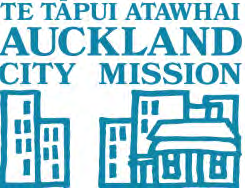 Te Ao Mārama
Te Ao Mārama
Narrative Report for MHUD June 2023
Te Ao Mārama Overview
Te Ao Mārama is a 60-bed block of apartments which is located on the Karangahape Rd end of A Day St
within Auckland’s CBD. The building was previously a hotel and has been repurposed to provide a range
of accommodation options, from studios to 2-bedroom apartments, spread over 11 floors. Auckland City
Mission Housing Limited (ACMHL) took on a long lease for the property, with the intention of providing a
permanent housing option for residents in the CBD.
All of the Te Ao Mārama apartments are self-contained, each having stovetop cooking facilities, bathroom
facilities, as well as a comfortable living area and individual balconies which provide residents access to a
private outdoor space. They accommodate singles and couples, but do not have families with children
under 16 years of age living there permanently. Residents can have children stay over weekends and for
agreed short term periods. All apartments are compliant with Healthy Homes standards.
The apartments are managed as independent housing, with 30 places available to people referred from
the MSD Social Housing Register waitlist, who are deemed to have low or no support needs, and another
30 places available to people eligible for Housing First Services. The Housing First cohort have a significant
history of rough sleeping and high health and social support needs.
The apartments are supported by three services: Tenancy Management via Auckland City Mission
Housing, Contracted Security, and Support Service Coordinators employed by Auckland City Mission.
Those who have come though the Street to Home route also have a Street to Home Key Worker assigned
to provide support. Street to Home keyworkers will visit their clients once a week as baseline, but the
intensity of support will vary according to need.
Successful Tenancy Sustainment
Of the 30 people who have been housed from the MSD Social Housing Register waitlist there have been
no evictions from the property. One individual has been experiencing some issues, and the Tenancy team
are currently encouraging them to engage with the Sustaining Tenancies and Support Coordinators.
For the Housing First stream, 36 people have been housed with 29 currently in housing, with a tenancy
sustainment rate of 80.6%. One person is currently waiting to be re-housed.
Of the 60 apartments, 59 are currently occupied and one is awaiting remediation.
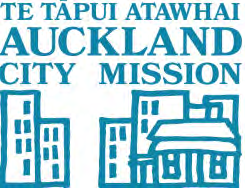 Support Coordinators
Support Coordinators
The Support Coordinators work alongside the Tenancy team and the other support services underpinning
Te Ao Mārama. Support Coordinators are present onsite 7 days a week, providing front desk support to
tenants and visitors, and welcoming those entering and exiting the building. Support Coordinators are the
face of the building, and their function is as much about the whole as about the as the individuals they
support.
Support Coordinators build a sense of community, maintain security, host residents’ meetings, provide
information on local community activities and groups, and assist residents to access support services or
one-off items such as food parcels. They support with making phone calls, accessing appropriate medical
care in case of emergency, contacting the police for safety issues, and looking up other service providers
as required. They have also supported with special events such as the National census event that took
place in April. Our Outreach Nurse holds clinics onsite at Te Ao Mārama for all tenants.
When the Tenancy team are alerted to a concern regarding an individual’s tenancy, such as rent arrears,
anti-social behaviour, or another issue that could put the tenancy at risk, the Tenancy team will offer the
relevant resident(s) the services of the Support Coordinators. The Support Coordinators will then work to
offer an intervention that will prevent the risk to tenancy sustainment from escalating further. Support
Coordinators typically provide intervention support on a short-term basis. If during this intervention it
becomes clear that more intensive support is required, the Support Coordinators will work with the
resident and other internal or external services to secure the appropriate supports.
Challenges
As with all new projects, there have been some challenges including securing access to the building,
managing the behaviour of some of the visitors, and managing relationships between tenants. Where
these challenges have arisen, plans have been put in place to address them, and various approaches have
been applied as needed. The Support Service Coordinators have been integral in developing these
processes and solutions, and in implementing these initiatives. The Support Coordinators also hold
relationships with the residents which has supported understanding and improved the management of
teething issues.
Conclusion
Te Ao Mārama is now all but fully tenanted, and is beginning to grow as a community housing project with
it’s own identity in the community. It has become clear that a more robust support model could be
beneficial at this site as the complexity of the tenants, the size of the building and high-density living poses
some challenges that may be able to be addressed with increased provision of support.

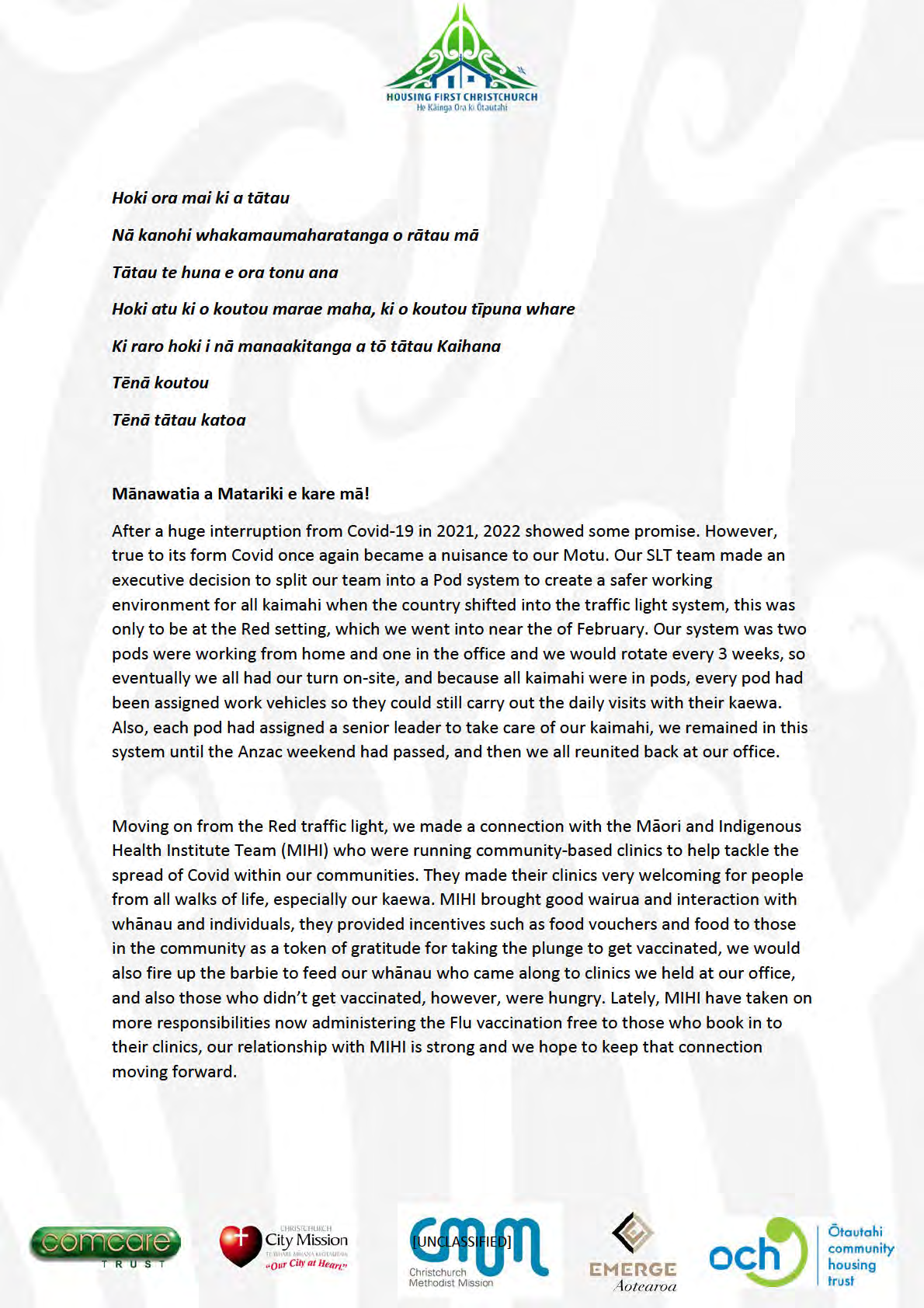
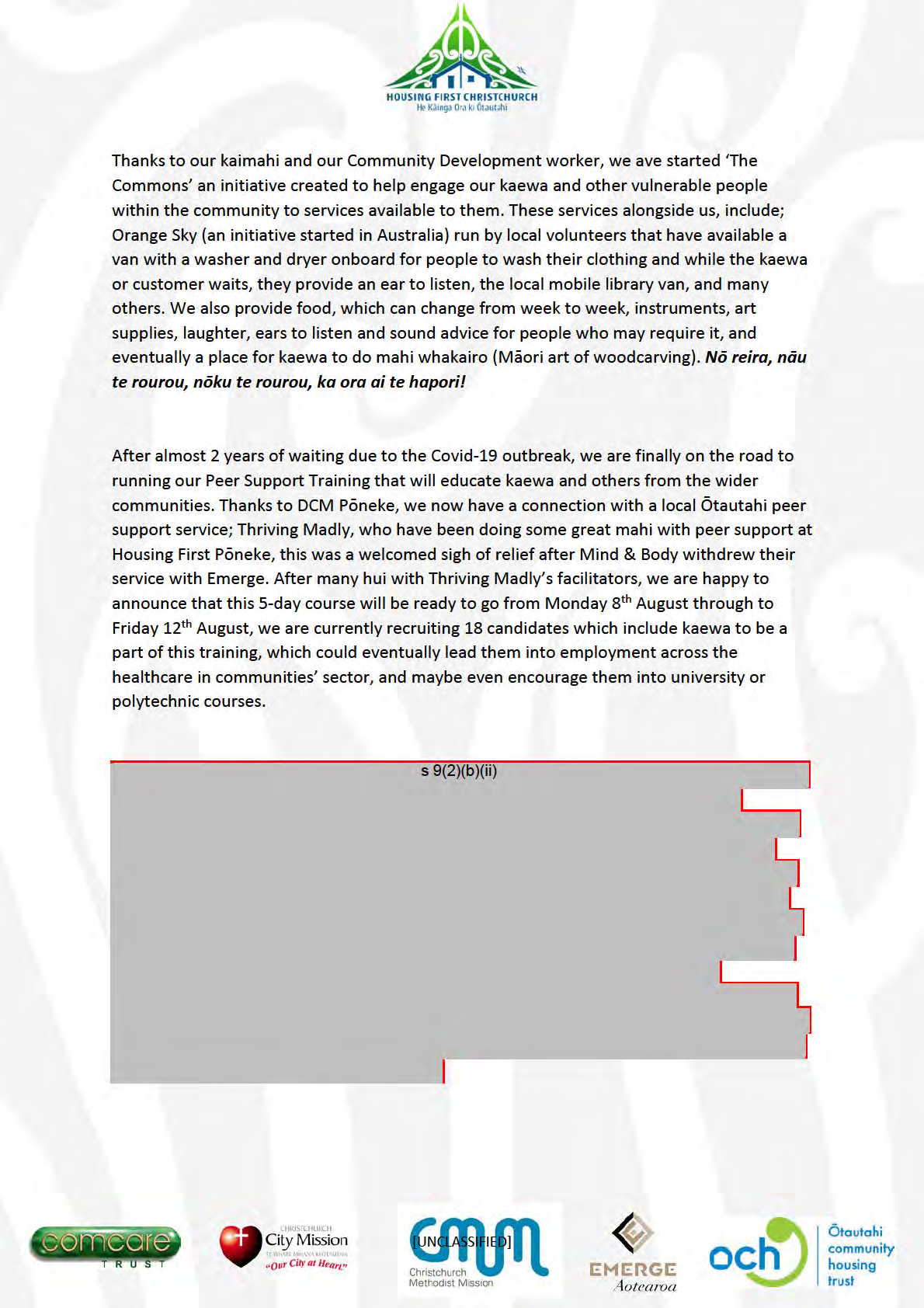
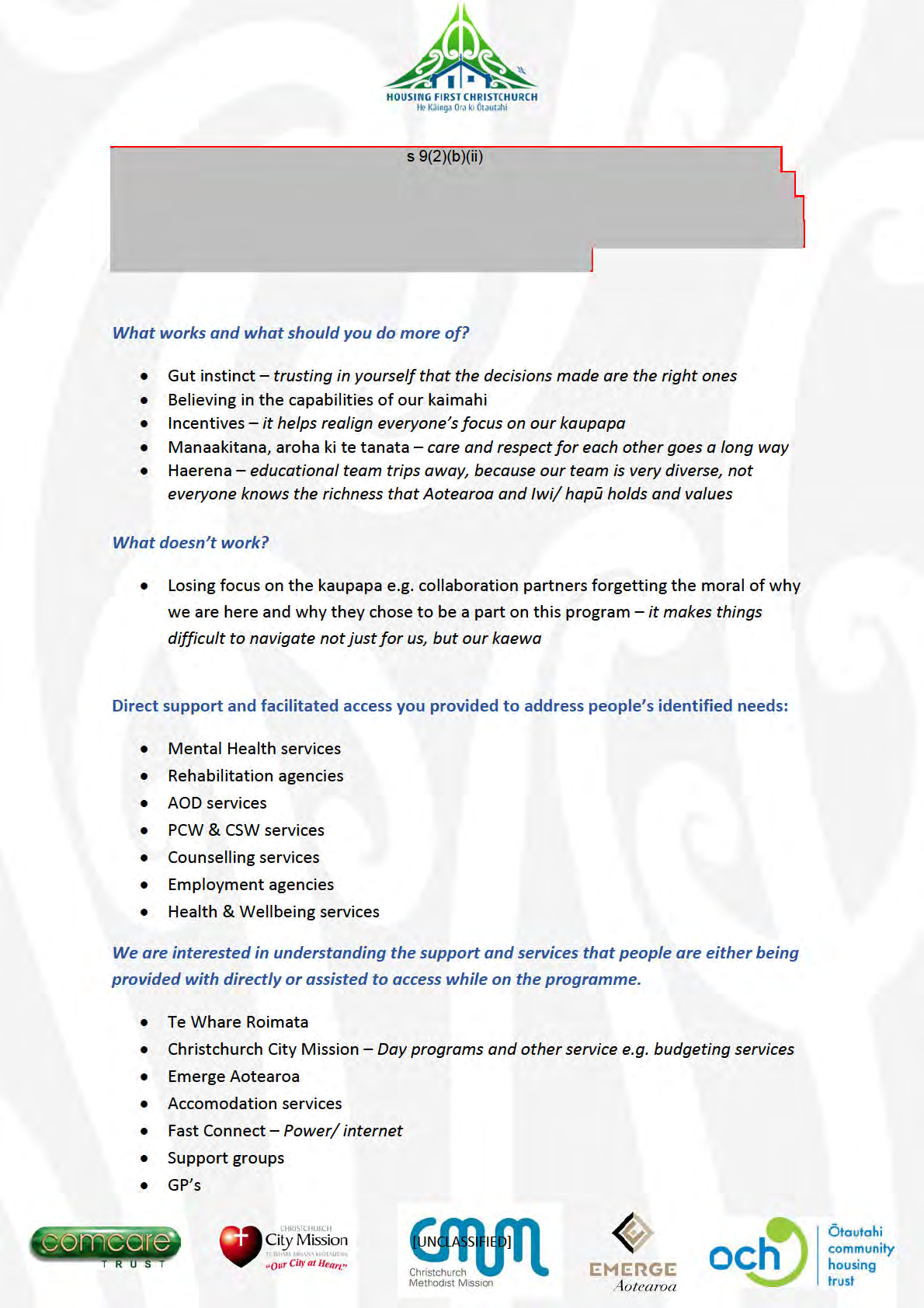
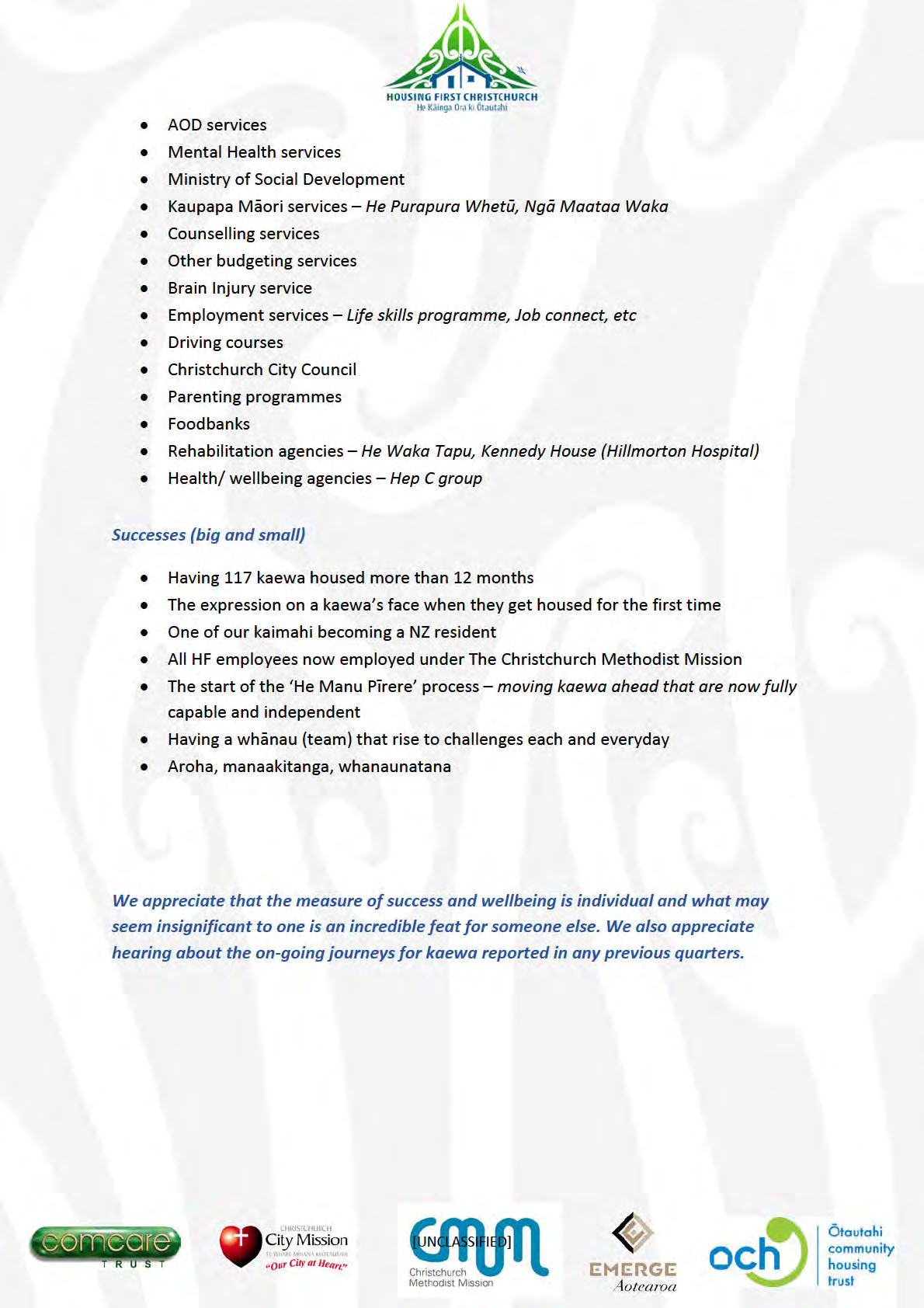
Aro Mai, Housing First Collaboration Wellington
Quarterly Narrative Report January 2022 – June 2022
Aro Mai Housing First (AMHF) has continued to provide services throughout the last six months. The
environment in which we have been working has been and continues to be chal enging and dynamic
with Covid infection spread, increases in rent and cost of living, housing shortages and reduced
insurance options in the Wel ington region. We have adapted our services accordingly, prioritising
health, safety and wellbeing. Towards the end of the period, we have returned our focus to the
Housing First principles and are re-shaping our service and organisation to better address this mahi.
In late January, the second contract for Housing First in the Wellington area was agreed with the
Ministry of Housing and Urban Development (MHUD). The new contracting arrangements separates
the tenancy management services, provided by Emerge Aotearoa, from the support services
provided by DCM. Though both entities have individual contracts with MHUD, we continue to work
closely with each other on a daily basis to provide the collaborative Aro Mai Housing First service.
Trends and Impacts that influence outcomes
Covid infection
AMHF partner organisations have adapted their services in response to the changing alert levels.
From late January until late April, this involved working indistinct bubbles and minimising physical
contact with taumai and colleagues. We maintained regular contact by phone, provided on-site DCM
service outside, visited taumai outside of their home and arranged socially distanced supports or
repairs inside the homes when needed. We supported vulnerable and sick taumai with food,
medicine and RATs through contactless deliveries. We worked with our partners to facilitate Covid
vaccine clinics and in recent month flu clinics. Our use of PEP, masks and social distancing has been
effective with very little transmission occurring at DCM. As a result, the staff absences relating to
Covid have been spread over the months and we have been able to cover the work throughout.
s 9(2)(a)
Reshaping
DCM has reflected on the roles and mahi across the organisation and in June reshaped the way we
will work and deliver our services. Over the last two years, AMHF work has been dominated by
meeting essential needs such as shelter, food support and accessing health services. The Hutt team
have become the main Outreach service in the area, receiving reports, looking for and engaging
people who are rough sleeping. The Wel ington team contribute to the daily on-site service at DCM
and assisting taumai to access emergency and transitional housing, money and food. Though this
work is with and for people who access AMHF, it can divert our staff from the key working
relationship that is core to the Housing First model. DCM will now operate services in two pou, with
the Piki te Ora pou focused on the initial engagement and immediate support. The Piki te Kaha pou
will be made up of Aro Mai Housing First, Sustaining Tenancies and Community Connection services,
enabling us to focus on and develop housing related skil s again, and build relationships that will
support taumai to thrive in their homes and community. Our mahi will be supported by the
Maramatanga pou who provide the backbone services for the organisation.
Along with the new pou, we are introducing new titles for all roles that reflect our value of Te Reo
Māori.
Recruitment and staff development
Recruitment and retention is a national issue and has affected AMHF service over the period. The
high turnover at the end of 2021 was influenced significantly by the vaccine mandate, but since then
we have continued to lose staff primarily to promotions in other organisations. We have carried
vacancies in Team Leader roles, Housing Procurement, Kaimahi/ Key worker and Kaiāwhina/Peer
workers. We have advertised continuously and held rol ing interviews throughout the year. Kaimahi
appointed have replaced those leaving rather than adding to the team and increasing our capacity.
We have been able to recruit a Team leader who will commence in mid- July and hope to confirm a
Housing Procurement Officer shortly.
In June, we again ran a peer training programme to introduce people to the concepts of peer
support and prepare them for informal, volunteer and paid peer roles. Again, there was a good
response and waiting list for the programme. Social distancing restricted the numbers to 10
attendees and il ness reduced the numbers who completed the weeklong course to five. We plan to
advertise and recruit to identified peer roles in AMHF in the near future.
With the high turnover of staff, we have been and wil need to prioritise training and development
to increase the team’s skil s and understanding of the Housing First model and practices that
enhance it.
Staff changes, vacancies and absence in partner organisations and other services has made it
challenging to maintain working relationships. We have been meeting, orientating and supporting
new col eagues in sector throughout the period.
Emergency Housing
AMHF support 22 taumai currently in Emergency Housing (EH). We have four in Transitional Housing
(TH). Since January we have been working to migrate taumai from EH to TH wherever possible and
to exit the last of the EH units funded by MHUD Covid response. The planned change of s 9(2)(a)
from EH to TH managed by Emerge Aotearoa has been repeatedly delayed. We are
unable to place more taumai at this site until repairs, furnishing and staff are in place. We have
supported the taumai who have been there since Lockdown in 2021 though these numbers have
reduced to three taumai at the end of the period.
s 9(2)(a)
Housing Procurement Report
Since starting in January 2022, the new Housing Procurement Officer (HPO) has been working at
establishing and re-establishing relationships with all types of property owners. There have been no
issues in regards to private owners, but it has taken time to connect with both property management
companies and governmental housing agencies. However, after now being the job for six months and
as the Covid alert levels have changed, the HPO has been able to establish these relationships and we
are beginning to be presented with property opportunities.
January – June 2022
Of the 17 properties secured for AMHF in the half year, six were on one site from one private owner,
10 were from other private owners, and one was from a property management company. Of these,
four were houses (all two-bedrooms), six were flats and seven were apartments (1x bedsit, 1x one-
bedroom, and 5x two-bedroom).
Contacted Approached Viewed
Secured for Housing
First
January
22
0
3
0
February
102
0
18
8
March
88
0
12
3
April
19
4
5
4
May
93
1
12
2
June
56
7
12
0
Total
380
12
62
17
There have been fewer properties advertised and available for rent. Landlords have also withdrawn
their properties to sell, because of complaints from neighbours about anti-social behaviour and to
seek higher rents. As a result, most new properties we have acquired have been used to re-house
taumai rather than house more taumai.
Kāinga Ora Dixon Street site and Wellington City Housing Granville sites are both to undergo major
repair and refurbishment. They need to be vacated and the taumai will be decanted in the coming
months. We have AMHF taumai in both sites. Tenants were informed in recent months and we have
been supporting taumai to prepare for this change. Planned graduation of taumai will be delayed as
we assist taumai with the moving and resettling process.
Kāinga Ora have informed us the construction of the Rol eston street site has been extended and wil
now be delivered in mid-2023. They have also announced that the planned use of the purpose built
unit on the site has changed from a Housing First model to Single Site Supported Housing. We are
unsure if Housing First taumai will be able to access this new service and are concerned for the loss of
planned properties for them. It is important to have an open dialogue between MHUD, Kāinga Ora
and AMHF to ensure there is access to housing for AMHF taumai.
Insurance
One major issue that has become prevalent over the last few months is the loss of potential properties
due to insurance chal enges. This issue has come in many forms and includes:
• Declining to provide cover due to use of property for social housing purposes.
• Providing cover but excluding key claim items such as malicious damage, or methamphetamine
contamination – risks that a CHP is unable to accept.
• Extreme increases in excess values for claim items (a 2,500% to 4,000% increase in some cases,
with minimum excess values being $10,000 for any claim item) – causing property owners to lease
elsewhere.
These additional conditions and premiums are being applied because the property is to be used for
social housing only. It has resulted in the loss of 12 properties in which the owner has wanted to lease
to AMHF, but was unable due to lack of insurance. Because of this, the HPO has redirected time away
from housing procurement, and has instead focused on sorting through this issue with insurance
providers, and key connections at HUD. We appreciate HUDs lead in addressing this issue with the
Insurance Council and wait the outcome.
In the meantime, though we continue to search for properties, we expect the number of properties
secured for AMHF will remain at the low-levels currently experienced.
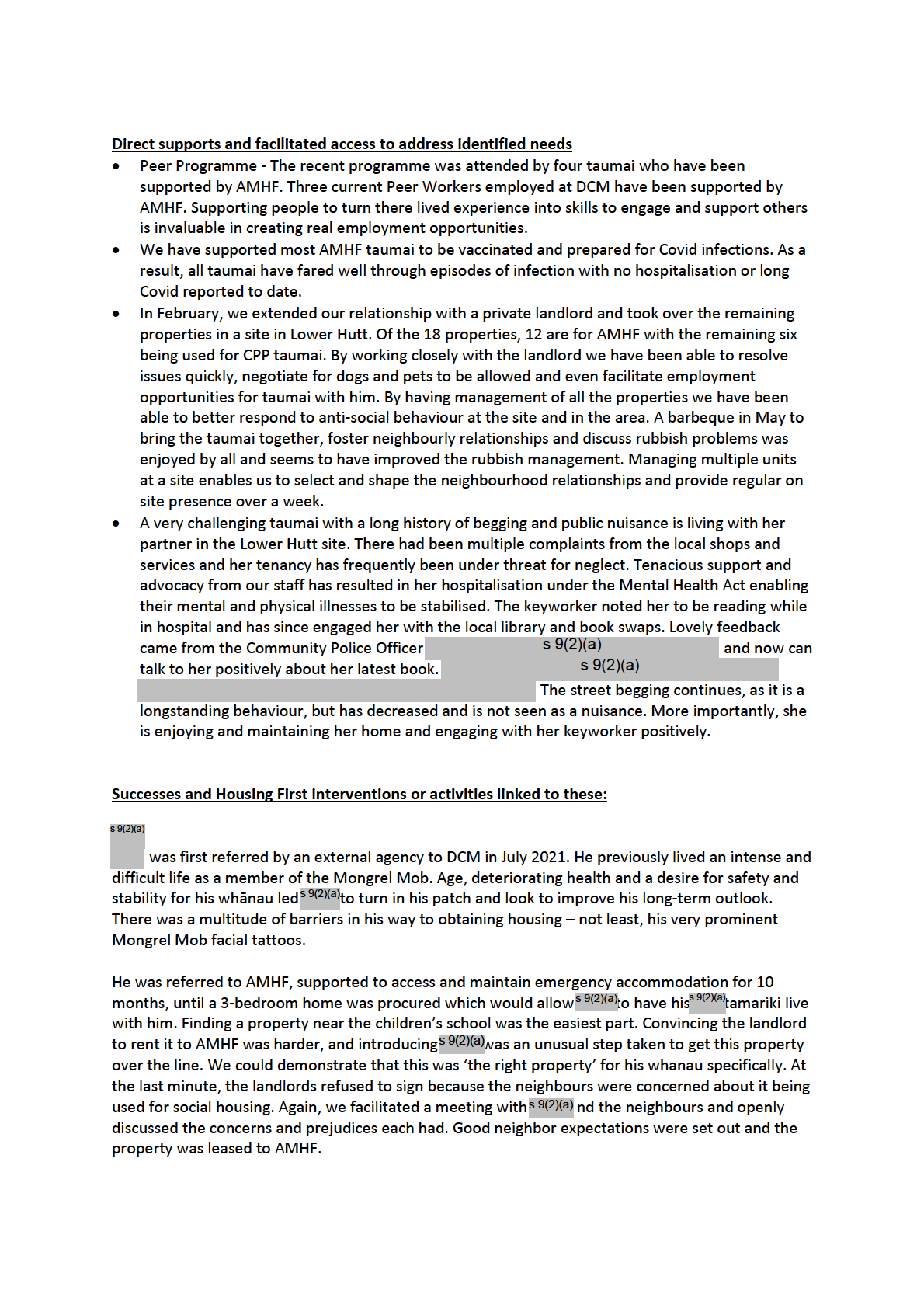
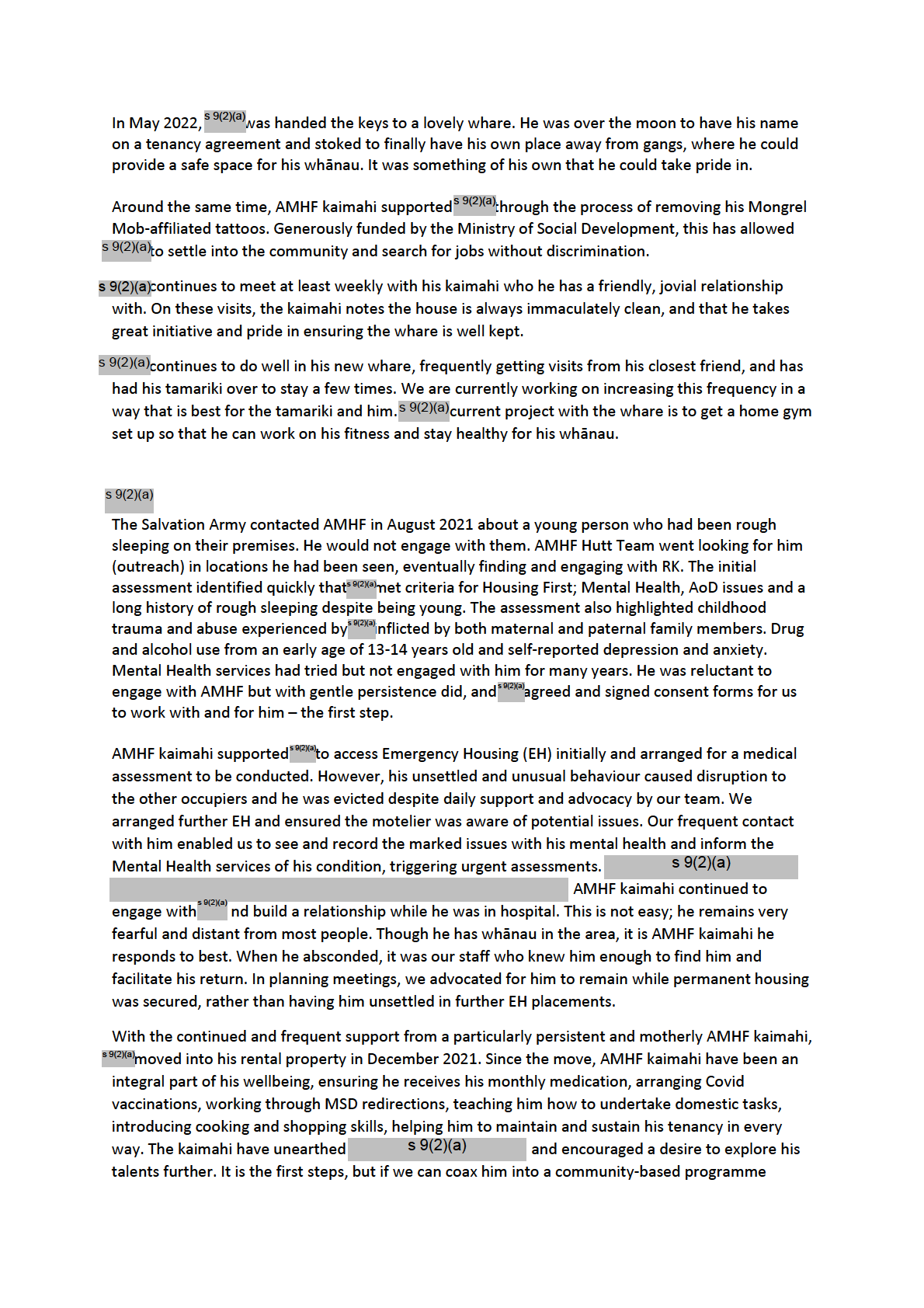
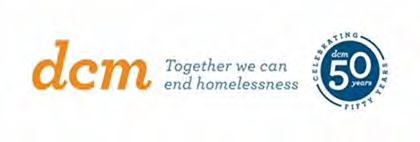
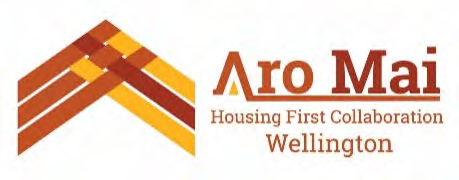
where he can develop
,
w
s 9(2)(a)
s 9(2)(a)
ill have not only a home, but also a place to go and an
identity in a community where he was previously cold, alone and scared.
Financial Information
Though financial reports are not required at this time, our end of year accounts are being prepared
for audit and an update on the financial position of the underspend to date will be provided at the
end of the month.
Please contact me if you have any queries or require further information.
Taone O’Regan
Kaiarataki Piki te Kaha
M: s 9(2)(a)
[email address]
www.dcm.org.nz www.housingfirstwellington.org.nz
Housing First Auckland Jan - Mar 2023
Quarterly Narrative Report
What has been your experience been?
What works and what should you do more of? What doesn’t work? What improvements could you make
or what opportunities have you identified?
In the last quarter, we experienced extreme weather such as floods and a cyclone. This resulted in
many properties being damaged, most being uninhabitable leaving many people stranded and
homeless.
On the night of the cyclone, we were cal ed out to one of Auckland’s Civil Defence Hubs which was
temporarily set up to shelter homeless people. Many of our homeless community had fled to the Hub in
hopes of finding a safe and warm place to wait out the cyclone, although it was known that the Hub was
a temporary measure and that those who were homeless, would be returning to the streets once the
cyclone had passed. In receiving the call on the night and in our immediate response we were able to
assess everyone present in the Hub and managed to place 11 people into our emergency housing
accommodation that night with a further 14 people the following day.
Having emergency housing has been an asset as it has provided immediate accommodation for our
most vulnerable. Though emergency housing was initially intended for COVID, we have continued to
see a great need for emergency housing as our homeless community has continued to grow for multiple
various reasons such as inflation, extreme weather, housing shortage, family harm etc. Emergency
housing has provided us with the opportunity to support our most vulnerable with urgency, relieving our
clients of the stress and pressure of finding a safe environment. However, our emergency housing is
scarce due to the influx of referrals from other organisations such as the Ministry of Social Development,
Police, Hospitals, and other housing organisations.
We have also noticed a trend with deportees becoming more noticeable in the homeless community.
These people have stated that they have been deported back to a country they no longer identify with
and have no sense of connection to. Though these people are classed as New Zealand citizens they
have no family or support here therefore they find themselves living on the streets with no support.
Direct support and facilitated access you provided to address people’s identified
needs:
We are interested in understanding the support and services that people are either being provided with
directly or assisted to access while on the programme.
In the last quarter, we have seen outreach become increasingly busy with referrals coming from all over
the Auckland region. We continue to build rapport with local communities, libraries, Police, Auckland
council, and other organisations to find solutions to support our homeless community. We have
partnered up with local churches to provide hot meals during outreach, we have also prioritized our
chronical y homeless for emergency housing with Kāhui Tū Kaha, as wel as work with local maraes to
provide additional wrap-around support for our Māori whanau.
With the ongoing inflation and many clients facing severe financial hardship, we have partnered up with
Siaola who are working with our clients to explore employment opportunities to be able to meet their
basic needs. We also continue to work alongside Auckland City Mission and Vision West providing food
support to those we serve.
[UNCLASSIFIED]
Successes (big and small) that show how far a person/household has come and
Housing First interventions or activities linked to these:
We appreciate that the measure of success and wellbeing is individual and what may seem insignificant
to one is an incredible feat for someone else. We also appreciate hearing about the on-going journeys
for clients reported in any previous quarters.
In the last quarter, we have housed 57 individuals and families in permanent housing which we see as
a huge success. We have seen these clients display immense self-determination since being housed
and work towards their long-term goals with such pride. This has also had a massive ripple effect on
their families and communities.
Despite some of the difficulties of accessing long-term housing supplies, our Rapid Rehousing space
has seen a prompt response to the high increase of incoming referrals regarding overcrowded families.
We have seen a rise in mental distress and negative physical health outcomes from overcrowding
circumstances. However, having resources to access our internal transitional housing space has given
us the ability to quickly exit individuals and families out of homelessness.
We recently received a referral of a
s 9(2)(a)
who entered our support
services
s 9(2)(a)
. She mentioned that she was in a “high-risk unit” due to
s 9(2)(a)
. She previously had boarded with family in an overcrowded
4-bedroom house with 3 adults and 11 children
s 9(2)(a)
. She had slept in a single
bed s 9(2)(a) in a room shared with other people in a room that was damp and mouldy.
Since supporting her to access transitional housing, she was able to access the appropriate health
care support for her son who had suffered several asthma attacks in her previous overcrowding
accommodation, but more importantly, give a positive outlook on her housing situation.
Guidance notes:
This information could be sourced through participant (or agencies) feedback forms, provider
assessments, and service evaluations. Not that the information provided should be non-identifying.
In providing examples of success, consider the following:
• Background and presenting challenges/barriers
• The types of support given to bring about change
• The changes or differences made by the participant or community, e.g. knowledge, skil s,
attitude, behaviour, and life circumstances.
[UNCLASSIFIED]
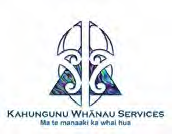 Kahungunu Whānau Services Housing First
Quarterly Narrative Report
Kahungunu Whānau Services Housing First
Kahungunu Whānau Services Housing First
Quarterly Narrative Report
Kahungunu Whānau Services Housing First
As a kaupapa Māori Housing First provider Kahungunu Whānau Services addresses the
prolonged increase in whānau being chronically homeless by ensuring our services are driven
by our values to support our whānau to achieve their dreams and aspirations through
affordable, sustainable, and permanent housing and Whānau Ora pathways.
What has your experience been?
We have registered on the Housing First programme in total 207 whānau. 190 whānau are
Housing First housed. The remaining 17 whānau are Housing First engaged. The demand list
assessment for whānau is ongoing.
From the 190 whānau housed. We have 9 whānau who need to be transferred to other
properties, who suffer from mental health, are in unsafe locations, chronic complexities
and/or the housing is not to a healthy quality standard for long term living, neighbour
conflicts.
Our Property Team continue to build their network of relationships with rental agencies,
landlords, body corporations, and trade services. Property Team continue to source
properties with a huge increase in the Hutt area. Eastern suburbs – Newtown, Kilbirnie,
Island Bay are in demand, unfortunately these areas of Wellington are hard to find
properties.
Properties are matched according to suitability that meets the whānau needs although
effort is made to house whānau that have been on the demand list for a longer period than
others. It has become more prevalent that moving whānau from emergency housing has
been influenced by tamariki needing to stay in the same areas of schools and col eges so
that they maintain stability in their education given how transient emergency housing can
be for whānau as they cope with day-to-day living. There is an increase in whānau that have
had pets for a long period wanting to keep them and a requirement to be close to public
transport and hospital for those that receive regular treatment.
Our positive ongoing relationship with Kainga Ora has given our service the advantage of
regular hui to also see what stock may be available that would suit whānau needs. Kainga
Ora have indicated that whānau I bring to their attention need to be A18 or higher.
[UNCLASSIFIED]
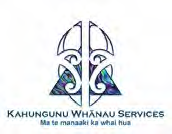 Kahungunu Whānau Services Housing First
Quarterly Narrative Report
What works and what should you do more of?
Kahungunu Whānau Services Housing First
Quarterly Narrative Report
What works and what should you do more of?
The Housing First Team collectively support whānau through their complexities and
navigating through the government institutions that is a way forward when whānau are
overwhelmed by bureaucracy.
Kahungunu Whānau Services avidly promote cultural values Whānaungatanga,
Manaakitanga, Rangatiratanga and Kotahitanga while working through high complex
situations. The space we create is for whanau to build a relationship, share their
circumstances, connect with the appropriate services, and we encourage whānau to
embrace options for opportunity.
Our kaimahi (support workers) wrap around whānau to empower them to make informed
decisions that plot towards their aspirations about their wel being that of their own and
dependents both young and old. Depending on the korero (story) of the whānau the wrap
around is varied, examples are budgeting, supporting childcare, support with Oranga
Tamariki, counselling, support in the Courts.
Repeatedly barriers are overcome by kaimahi as they wait on lengthy call queues on MSD
and MSD Housing Line to follow up that social housing registry numbers are still active and
whānau are at their potential rating as they also wait on community social housing. This also
includes any engagement with MSD as advocates.
What works is to be open and honest with whānau even at times when their behaviour has
compromised their situation negatively, to keep going despite the challenges and to treat
people in the same way that you would like to be treated yourself. Transparency with
whānau about processes with estimated timeframes also is important so whānau are clear
about where they are in the process for what they require. Whānau are also reminded that
as a participant with Housing First it’s important that they continue to engage with kaimahi.
What doesn’t work?
Mental health, poverty, violence, strong gang activity, intimidation and addictions remains in the
communities we are helping. Whānau resilience is strong as they share their moemoea (dreams),
despite not having a stable home to live or are housed with limited finances and are figuring out
how to get by day to day.
[UNCLASSIFIED]
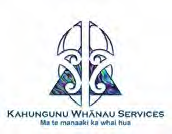 Kahungunu Whānau Services Housing First
Quarterly Narrative Report
Kahungunu Whānau Services Housing First
Quarterly Narrative Report
Other arears of concern include the following.
• Letters of support to Ministry of Social Development (MSD) have no influence on Housing
applications and priority numbers.
• Second hand furniture is not of good quality with little longevity.
• There is limited rental properties that meet the Government’s quartile requirements.
• Limited grants/funding available for whānau being housed as the cost of moving has
amplified.
• Whānau having limited resources when moving into their new whare, which in turn can create
an unnecessary dependency.
• Bad Credit limits the ability to have power/gas connected.
• Increasing rent with lower socio-economic whānau is creating overcrowding in whare which
sees them pushed into Emergency Housing.
• Whānau being pushed further down the Housing list because of a new group of people who
became dependent on Government assistance during Covid-19.
• Social Housing Rating assessments taking 6-8 weeks for a call back once they have notified
MSD, they need one
• Implications of children's education due to having to shift schools moving in and out of
emergency accommodation including the extra transportation costs associated with moving
locations.
• Streamlining processes to enable more affordable housing outcomes for whānau.
What improvements could you make or what opportunities have you identified?
• Government departments providing NGOs with more control to better streamline the process
with the ultimate goal of ending homelessness and increasing home ownership.
• Support housing innovation and technologies to better interact with whānau.
• Supporting the cultural needs of whānau to assist with connecting to the relevant wrap
around services including reconnecting to iwi and hapū.
• Fostering a kaupapa Māori approach to ending homelessness which to date has helped to
strengthen our process to assist with helping whānau to secure sustainable and permanent
housing.
• Housing quartile to reflect the demand in housing crisis and rental costing.
Direct support and facilitated access you provided to address people’s identified needs:
• Whānau have access to relevant wrap around services which sees whānau developing
relationships within the community which leads to improved behaviours and engagement.
[UNCLASSIFIED]
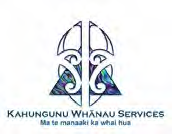 Kahungunu Whānau Services Housing First
Quarterly Narrative Report
Kahungunu Whānau Services Housing First
Quarterly Narrative Report
• Providing basic household items that empowers whānau to start their housing journey in a
positive way.
• Engaging in budgeting services which assists whānau with their goals of home ownership. Al
our kaimahi can assist with budgeting.
• Actively supporting whānau to upskil to access employment opportunities within the
community.
• Whānau wanting to actively engage in setting goals that provide them with relevant skills to
integrate with their community and connect to iwi, hapū and whānau.
• Assistance with finding childcare
• Whanau to be better resourced financial y with set up of permanent housing.
Covid 19 Response
• COVID continues to affect our whanau and requests especially with kai support is ongoing.
Successes (big and smal ) that show how far a person/household has come and Housing First
interventions or activities linked to these:
HOUSING FIRST NARRATIVE June 2023
Whānau make up - 1 Pakeke (adult)
Whānau enrol ed in 2022. Whānau was currently in emergency housing in s 9(2)(a) in the City.
Whānau struggle to work with Ministry of Social Development( MSD) due to his aggressive
behaviour . Whānau was seeking support with finding permanent housing for him and his whānau.
Back story, whānau is a single tāne who moved from Australia in search of a new start for him and
his whanau, that are currently living in s 9(2)(a) Australia. Whānau does have drug and alcohol
issues that he is seeking support with. Whānau shared he struggles to communicate with goverment
services which has created road blocks with his situation. Whānau is aware that he lacks motivation
and needs to change his mindset aroung this. Whānau is also wanting to find employment.
Kahungunu Whanau Service provided whānau with the wrap around support with MSD. Set up drug
and alcohol program and supported whānau in part-time empolyment.
Kaimahi addressed whānau’s behaviour around his engagment with services. Kaimahi has also
created a mentoring relationship with whānau. The mentoring has helped whānau change his
approach to other services and he can see the postive result in this behaviour.
[UNCLASSIFIED]
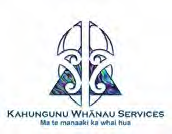 Kahungunu Whānau Services Housing First
Quarterly Narrative Report
Kahungunu Whānau Services Housing First
Quarterly Narrative Report
Whānau is now housed in permanent housing and is slowing building his pathway to bringing his
whānau back to New Zealand.
Whānau make up – 1 Pakeke (adult) 1 tamaitii (child)
Whānau was homeless due to leaving an abusive relationship. Whānau was in women’s refuge and is
seeking premenant housing for her and her son.
Back story, whānau shared a tenancy with ex-partner. Since leaving ex-partner, whānau can’t afford
private rental due to her single income. Whānau work full-time but struggled to break into private
rental market. Whāuanu has a
s 9(2)(a)
for the safety of both her and
her son. Whānau felt disempowered by her situation.
Whānau shared that her biggest goal is to own her own home. To start her own business. Create a
home for her and her son.
Kahungunu Whanau Service provided transtional housing and then moved whānau into a permenant
housing. Provided wrap around support in Mana wahine programe to empower whānau again.
Whānau has created a safe home both her and her son. Whānau is working hard towards her goal
for home ownership.
Whānanu is an outstanding tenant. We will be graduating whanau from our Housing First program.
Whānau make up – 2 Pakeke (adult) 2 tamariki
Whānau came into our service seeking urgent housing support. Whanau was pregnant and had a
one-year-old child. Whānau was kicked out of her uncle’s home and had no other whānau support.
Father of children has strong gang affiliation, and this affected them being housed.
Back story. Whānau are both young parents, father is connected to gang as he was brough up in that
environment. Young couple, there has been on going domestic violence.
Whānau shared she would like to
s 9(2)(a)
and be employed. She wants her daughter to she
her as a working mum.
Kahungunu Whānau Services supported whānau into transitional housing and then into permanent
housing.
Whānau have been in our service for two and half years. In this time whānau are in full-time
employment. Father is no longer as involved with his gang connection, and both have worked hard
[UNCLASSIFIED]
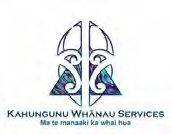 Kahungunu Whānau Services Housing First
Quarterly Narrative Report
Kahungunu Whānau Services Housing First
Quarterly Narrative Report
on their relationship. Their eldest child
s 9(2)(a)
, which has directed the whānau into being
involved in this new community for their daughter. This has changed what is important to them as a
whānau.
[UNCLASSIFIED]
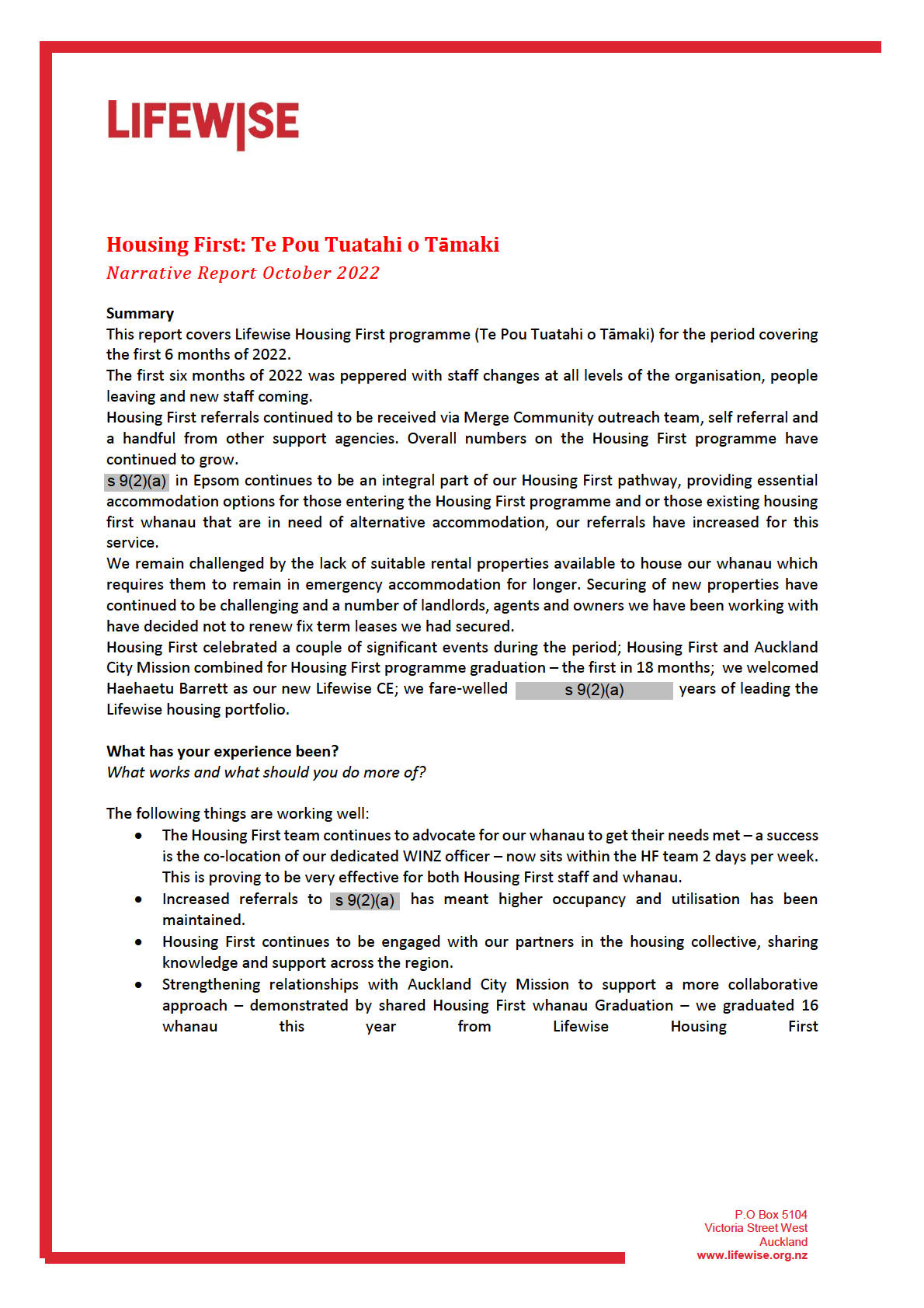
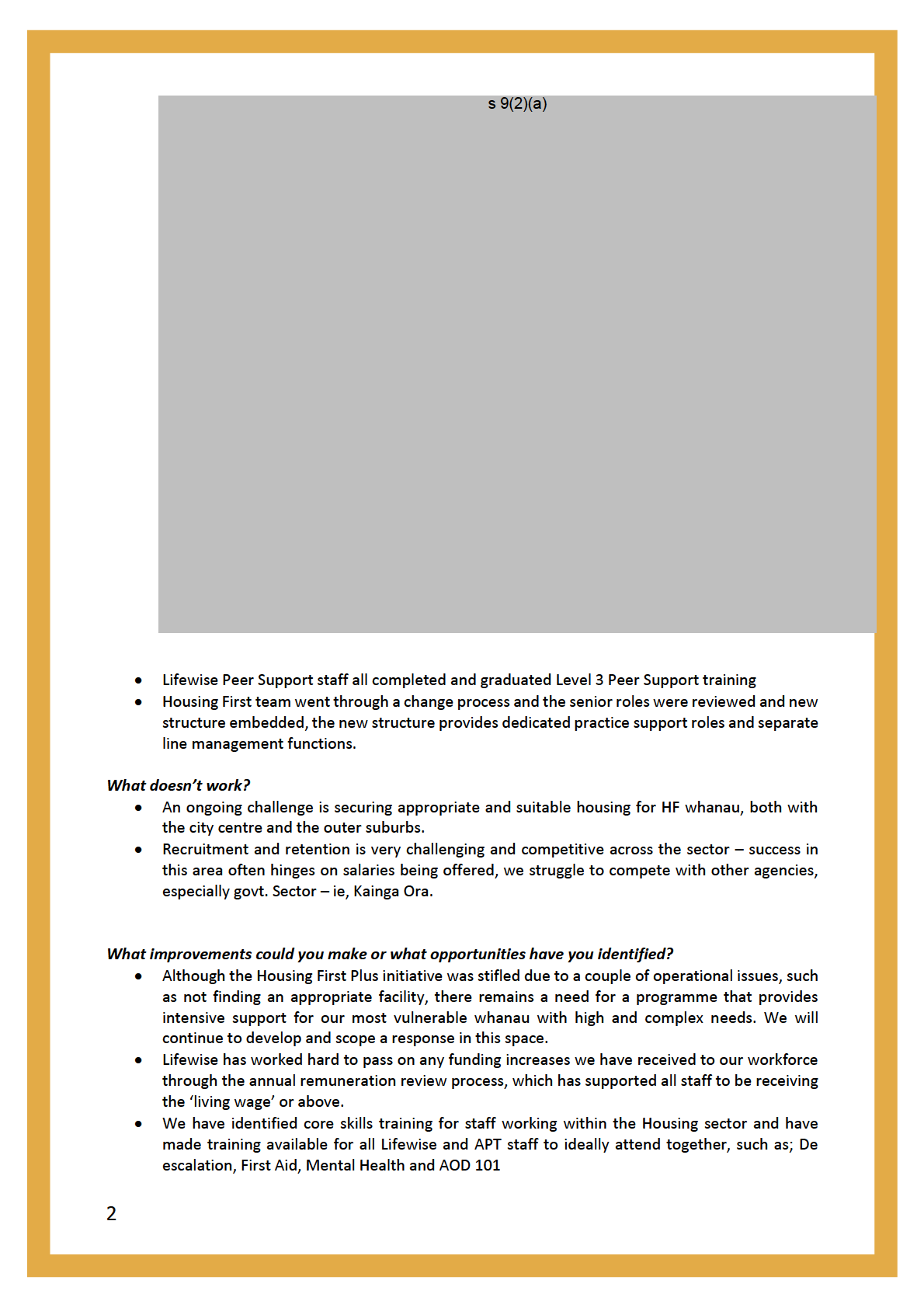
Lifewise and APT have been working together within the Health & Safety space, reviewing safe
working procedures, information sharing and risk management – this is ongoing
A need that our Key workers repeatedly identify is the lack of free general counselling available
for Housing First whanau to access – this is identified as a speciality resource that would be
widely used if available within either Housing First team and/or Merge Community.
Direct support and facilitated access you provided to address people’s identified needs:
Support and services that people are being provided with directly
Evaluation – We recently took part in the Litmus evaluations interview staff, peers support
workers and managers to assess some of the learning and insights gained in Housing First over
it first few years. Further interview will take place with programme participants
Health Services – Advocating for people to access the service they need to meet health
outcomes in relation to mental health, Addictions and access to personal development and
community development opportunities (Calder Centre/Taylor Centre), this is an ongoing piece
of work.
Motel – the Motel continue to have high occupancy and is being well utilised by HF whanau.
Needs assessments – continually assessing peoples changing needs and reviewing so we are
accurate respond to enable people to have their needs met
Community Integration – support for people to access cultural spiritual leisure and
learning/work opportunities (WINZ/Auckland Council/Merge Community/ Auckland City
Mission)
Kainga Ora has developed a ‘pop up’ community engagement space directly over the road from
the Vincent Street office which has been made available for the Housing First team to utilise,
we have successfully used the space for events involving the HF whanau, such as graduation,
driver licence courses and computer literacy, to name a few.
Support and service that people are assisted to access while on the programme.
Safe men safe family – domestic violence
ADHB Te Whetu mental health
Probation
NZ Police and community policing unit
Whanau members have been referred to Emerge Aotearoa for Awhi Ora (Support Hours for
Engagement in the Community) and Cookese (Community Volunteering Project)
Referrals to psychologists for free counselling
Immigration lawyers
Housing First participants are active volunteers in the Lifewise Merge Community Team
Primary health care (the majority of participants in the city centre are enrolled in the Auckland
City Mission Calder Centre).
Workcare (support to gain community-based employment)
Community Alcohol and Drugs (CADS)
New Beginnings Court
Community Law
Building Financial Capability
Oranga Tamariki (working alongside pregnant mothers)
SHINE
Family Safety Team (Police)
Community Mental Health Services
PARS
Community Detox facilities (ACM and Pitman House)
3
Document:
Narrative report Housing First Nelson Tasman
Date:
20 January 2023
Author:
Jaap Noteboom
Trends or impacts that influence outcomes – what works and what should the Provider do more of?
What doesn’t work? What improvement could be made or what opportunities have been identified?
- Within our Housing First Team we more and more realise the significance of building good
relationships with our whanau. It is often that within those relationships’ “miracles” start to
happen, disclosures are made, and support is accepted. For one whanau that building of a
good relationship might take just weeks whilst for another whanau this can take more than a
year.
- One of our Motels we utilise is the s 9(2)(a)
. Because we have 24/7 security onsite we
have accommodated whanau in this Motel who are in need of additional guidance which can
be provided by the security guards. We noticed an increase of alcohol consumption and
therefore also an increase in issues between whanau accommodated at this Motel. We
subsequently consulted with the Security Company and had a big community meeting with
all whanau to discuss the presenting issues. Based on this an “alcohol plan” based on the
input of whanau was put in place. Since then, we hardly have any alcohol related problems
anymore.
- As stated above the s 9(2)(a)
has been utilised for the most challenging whanau as we
have 24/7 security in place and the s 9(2)(a)
is solely occupied by Housing First
whanau. Security has been able to stabilise the whanau at the Motel complex, however
there were still issues with whanau outside the Motel complex causing anger and frustration
with the neighbours. We are grateful that MHUD has approved an additional 5 rooms and
24/7 Security at the
s 9(2)(a)
. This
s 9(2)(a)
is located in a
commercial area of s 9(2)(a) in Nelson and doesn’t have direct neighbours. We now have
been able to relocate the most challenging whanau from the s 9(2)(a)
to the
s 9(2)(a)
. Since we have relocated the most challenging whanau we haven’t
heard any more complaints from the s 9(2)(a)neighbourhood.
- Housing First Nelson Tasman stared a partnership with Habitat for Humanity and Victory
Community Anglican Church. This project provides 8 relocatable Cabins, a central
community room with kitchen and central ablution block. The project has now been
completed in we are in the process of moving the first whanau in.
Direct support and facilitated access provided to address peoples identified needed – what support
and services are individuals and whanau being provided with either directly, or being assisted to
access, while part of Housing First?
Each whanau will have an individual support plan and a designated Outreach Worker. However, we
as team look collectively after each individual whanau. Whilst our Outreach Workers build strong
relationships with our whanau and support them with their individual goals, the majority of our
whanau is are being assisted to,
- Reconnect with a GP and Mental Health Services
- Get on the Social Housing Register with W&I and/or review their rating
- Be on the waiting list for Kainga Ora
IN CONFIDENCE
The reconnection with a GP and/or Mental Health Services has proven to be really beneficial. Health
assessments are completed and often medication renewed. For at least three whānau this has
resulted in a significant reduction of presenting behavioural issues and psychosis.
Successes (big and small) that show how far an individual or whanau has come, and the interventions
or activities linked to these – the measure of success and wel being is individual. What may seem
insignificant to one person is an incredible feat for someone else. MHUD also appreciates hearing
about ongoing journeys for Housing First Clients who have been reported on in any previous quarters.
- The Mahitahi Colab is both a physical space and a partnership between its founders, Nelson
Tasman Chamber of Commerce, Nelson Regional Development Agency and Nelson
Marlborough Institute of Technology, who together, aim to drive innovation through
collaboration in our region. They provide a community and events programme designed to
educate, inspire and enable business in our region. Through Mahitahi Housing First Nelson
Tasman has now facilitated for three whanau to start their own business. One has started his
own tree-care and tree maintenance Business and two have started their own art business.
- One of the whanau, a young wahini has now also secured a private rental pace and is no longer
accommodated by Housing First.
- We have worked with an elderly whanau for quite some time and during this period he was
on and off in our Motel Accommodation. At times he suddenly disappeared
s 9(2)(a)
for weeks in a row. Over time this “disappearance” reduced, and he now secured
a private rental. We are still supporting him and he enjoys his new accommodation and is
doing well.
- An elderly couple has been with our Housing First Programme for over a year. During this year
they were accommodated in a Motel and there were great concerns for their wellbeing,
especially for the elderly female as her husband could suddenly disappear for days leaving her
without any care arrangements. We first were able to accommodate them in a Kainga Ora
rental and as the wellbeing of the elderly women deteriorated the Outreach Worker was able
to get her in an elderly home in which she could be supported n and cared for.
IN CONFIDENCE
Housing First Report
CONDUCTED BY: Jesse Gordon.
MONTH: March 2022 PROVIDER: Te Hau Ora O Nga Ngapuhi.
INTRODUCTION
The purpose of this document is to inform MHUD of the work conducted on
THOONS housing first Contract for the Month of March 2022.
The report wil include the required information on clients successfully placed in
permanent housing as per the reporting standards supplied with the contract.
The document wil also go into detail regarding work in progress regarding the
contract. This wil include such items as relationships with owners that have been
forged, other potential homes on the horizon, and houses that were worked on but
did not get over the line for one reason or another.
PROPERTY LOCATION & CLIENT PLACEMENTS:
APPROVED
s 9(2)(a)
KAIKOHE:
Towards the end of February, I began liaising with a property developer who had
just finished transporting and renovating three relocatable homes on s 9(2)(a)
in Kaikohe. They were Ex-Navy homes and have been refurbished to a decent
standard, which in my opinion puts this home in the middle to upper quartile
bracket of the rental market. They were also compliant with the Healthy Homes
Standard including the recent amendments. Al bar the heating standard in this
address in particular. This matter has since been addressed with al parties
involved including MHUD, I wil go into further details below. He had already
committed two of the homes but gave me an opportunity at the third.
As it was my first Housing first home I did not have a ful understanding of the
registration process for clients with MSD and after 2 weeks of fol owing up, I was
given the unfortunate news that the client whose owner had selected from the
options I had given was not eligible for a “housing rating” as her income was over
the threshold. I would like to mention here the only reason the owner was wil ing
to give us a shot was that he had the opportunity to meet the potential tenants.
I took a positive from the first client being declined from MSD and moving forward
I wil suggest no applicants that have not already been through the process with
MSD of getting a “housing rating”.
I was fortunate enough to get a second shot at the home and I introduced three
potential clients tos 9(2)(a)
this time being sure they had all been through the
process of applying for housing at MSD. when he was onsite the fol owing
weekend I brought each client down individual y giving them and the landlord the
opportunity to meet each other while he showed them through the house. I feel
like this exercise was also beneficial from a social aspect as it was getting these
people who were probably not confident when applying for rentals and attending
an open home type situation used to an environment that would be similar if not
identical if they were to meet a property manager at an open home. The owner’s
background as a property manager also added to the authenticity of this mock
exercise, which for the two candidates who were not successful was a definite
confidence booster.I reassured them that they interviewed well and if they did the
same with real estate advertised properties they would have a “real shot of
securing homes alone.” This statement was not just to make them feel good all 3
clients presented and communicated wel considering they al admitted to never
going through a open home before(rental).
From the three potentials, he choose one of our Emergency Housing (EH) clients
s 9(2)(a)
.
This was great as it opened up a space for whanau in need at the
s 9(2)(a)
and removed a long-term EH client from that space that is only
designed to be a short-term alternative.
As per the contract requirements, only 11% of my total clients for Housing First”
can come from Emergency or Transitional housing. Could you please confirm if I
have interpreted this correctly, please?
I wil now quickly go back to the home itself and the Healthy Homes issue. The
owner agreed that there would be a compliant heat pump installed within 90 days
of the tenancy beginning. I actual y recognised this statement from the tenancy act
where it describes the landlord’s responsibility in terms of supplying compliant
heating in the situation where a new tenancy/management begins. Before moving
any further with the property I confirmed withs 9(2)(a)
hat it was ok, notifying her I
had received written confirmation via email that an electrician had been scheduled
to install a heat pump in a few weeks. s 9(2)
agreed under the conditions that we
would supply sufficient heating in the interim. I have a large oil heater that I plan to
deliver early next week ( currently at home with covid 06/04/22.). One of the
reasons the owner decided to have the agreement between himself and the
tenant rather than with THOON as the tenant (which would be a more secure
option from a liability perspective) was because he wanted to conduct the
inspections himself. I let him know I have a property management background.
His response was he also did but his experience as a builder means he spots
important maintenance issues that other property managers have missed costing
him lots of money with previous rental properties. I let him know that was fine but
regardless we wil need to conduct inspections ourselves for our internal reasons
(whanau ora, wrap-around services) they were both total y fine with the
arrangement and I was happy to final y secure a home under Housing First. Since
it nearly missed and the many hurdles along the way it felt satisfying, to say the
least. Many learns were made that I wil take forward with future Housing First
mahi, especial y with the BOS side of things. I want to apologise for the constant
back and forth during this timeframe due to my poor notes from our training and
thank
f
s 9(2)(a)
or her patience and timely responses that saved me lots of
frustration. Things are firm in my mind after completing one and I’m sure the next
ones wil go a lot smoother on the BOS end of things. In the Supporting
documents field below I wil supply the letter I initial y gave
(
s 9(2)(a)
SD1) and his
investment partners. In my opinion, this letter really encompasses what helped me
secure the property. It states the incentives of coming on board with THOON with
social housing and I do my best to eliminate the stigma I feel is automatical y
associated with social housing. I attempt to normalise the clients in the homeless
predicament by saying we are all in the same boat in NZ with a housing crisis and
many of these people have good references, credit, etc but found themselves in
an unfortunate spot. The general letter I put in vacant houses’ mailboxes is similar
and so is my verbal pitch. You can often see landlords and property managers
alike register with my point of view and see things from a light that favors our
purpose when I relay them this information.
s 9(2)(a)
SUCESSFUL CLIENTS DETAILS
-
SWN
s 9(2)(a)
-
GENDER
:
Female.
-
ETHNICITY:
:
NZ Maori.
-
IWI
s 9(2)(a)
-
EMPLOYER
s 9(2)(a)
-
EMPLOYER CONTACT
s 9(2)(a)
-
BENEFIT
:
Sole Parent Support.
-
s 9(2)(a)
REFERRAL SOURCE:
MSD supplied the referral and placed
in the EH facility we
have at the s 9(2)(a)
Her stay at the s 9(2)(a)
was for quite a significant period making her
a priority for permanent housing.
-
s 9(2)(a)
PRIMARY LIVING SITUATION:
As expressed above
was an EH client living in the
s 9(2)(a)
. As you are well aware this is by no means an ideal housing option
for people and due to current renovation work on the facility itself it was in a state that
resembled a commercial worksite.
s 9(2)(a)
Temporary ply wal s throughout create limited
light in the hallways, the EH facility at the
s 9(2)(a)
is by no means at its ful
potential as ints in a refurbishment phase. This makes an already somewhat last resort
environment even a little more disheartening than it would normal y be for those who cal
it home. Several clients had nowhere to go so we are fortunate the owner has let us have
7 of these clients stay on with tradesmen basical y working around them.s 9(2)(a)
as one of
the remaining 7 left staying at the s 9(2)(a)
well it underwent much-needed repairs.
-
s 9(2)(a)
DURATION HOMELESS:
The referral from MSD for
was received on the 17th of
September 2021. Prior to that, she was living in an overcrowded home on the couch or
makeshift bed as she found herself in the position after coming north
s 9(2)(a)
with nowhere to return to afterward. Taking that period into consideration it would stil be
less than 1 year.
-
HOMELESS EPISODES:
Prior tos 9(2)(a)
journey north s 9(2)(a)
mentioned above her
life including housing was fairly stable according to her. Taking that into consideration I
would deem her having two homeless episodes if you include EH in that category, or one
if not.
-
WRITTEN CONSENT FOR SERVICE:
Yes she has supplied written consent. This is a
requirement for all EH clients at thes 9(2)(a)
I wil provide the MSD referral in the
supporting document field below as evidence.
-
WHANAU LED GOAL PLAN: One of my colleagues has recently been al ocated to the
position of a Whanau Ora planner ( Michel e Absolum). I have introduced her to Nita and
she plans on meeting her to complete a whanau plan on the first Monday of next month
(02/05) and follow up fortnightly. I have suggested to her that she should organise our
financial advisor to wrap budgeting services around Nita as recent events have caused
me to have concerns around Nita’s capability to manage her income sufficiently. I wil
explain below.
-
INTERACTION FREQUENCY IN PAST MONTH: Earlier in the month I met with
on
s 9(2)(a)
site s 9(2)(a) passing her on payment details so she can set up an AP or direct payment
for the %25 contributions towards the rent. It was a comprehensive and easy to follow the
letter and she verbally made it clear she understood the request and would follow it
accordingly. The weeks following have resulted in no payments being made. My last
encounter withs 9(2)(a)a week ago ended with her saying MSD had paid her bond and
weekly contribution amount to date. I organised a face-to-face with s 9(2)(a) who Nita
said had confirmed this to find out he had not at all and she was not eligible due to her
income. This was no surprise as I knew
w
s 9(2)(a) ould have notified me and it was unlikely
with her job that MSD would cover the small weekly amount of $102.5 for her. Once
again I take it as a learner and as much as I wanted to secure the home I knew sorting
bonds and rent in advance after the tenancy began (even though the owner didn’t mind)
was a move my past employer would not condone and not a wise one. It also highlighted
the fact that under a tenancy where we sublet out to whanau we would have more
leverage in this situation and has prompted me to think about mitigation techniques for
similar situations moving forward. She has given me her word she wil sort it before the
next day rent is due after I delivered her a letter for motivation. Hopefully, it was an
honest mistake on her end (
c
s 9(2)(a) laims the payments were actually made but to the EH
account MSD has for
)
s 9(2)(a) and our wrap around services in the form of
budgeting/financial advice give
the
s 9(2)(a)
tools to deal with her fiances more effectively.
-
NUMBER OF DEPENDENT CHILDREN :
ha
s 9(2)(a)
s two children that are not under her
full-time care but who stay with their mother for two weeks
s 9(2)(a)
,
which has been agreed upon as okay by the landlord. Part of the reason he chose her
was due to the fact she had no permanent child residents, so I have my fingers crossed
that both
a
s 9(2)(a)
nd her kids mesh wel with the neighbors who live in close proximity and
are s 9(2)(a)
enants as wel . A good impression with this property is key for me to secure
others
i
s 9(2)(a)
s planning in the region moving forward.
-
DATE HOUSED: The 30th of March was the start date on the tenancy agreement. The
agreement is between the landlord and
h
s 9(2)(a)
erself. I wil supply a copy of the agreement
in the supporting documents (SD2)
TYPE OF HOUSING
:
1950’s relocatable (ex-navy house
from Davenport). Fibrolite cladding, color steel roofing, Timber flooring, a new
kitchenette, and a general renovation across the board. There is some movement
damage noticeable in the ceilings of the kitchen but nothing that creates unreasonable
gaps or holes that would affect the Healthy Homes compliance of the home. The timber
joinery is in average condition with some sections having rot/water damage, once again
nothing to the extent where draught is a Healthy Homes compliance issue. There is a 6-
foot new timber fence surrounding the home a concrete drive to the gate but no concrete
or gravel turnaround area within the fenceline. This may pose an issue with mud/lawn
damage in the winter months and was mentioned to the owner. It has residential zoning
in
K
s 9(2)(a)
aikohe and is within 5-10 minute walking distance of all local amenities. As
mentioned above it is under a private tenancy agreement. This has shone a light on the
issue of having no authority in the situation where
ha
s 9(2)(a)
s not paid her contribution and
has highlighted how key good wrap-around services are with “Housing First” to prevent
the tenancy and relations between THOON and a valued owner/developer falling over.
UNSUCCESSFUL
s 9(2)(a)
KAIKOHE:
Initial y, this deal with the owner presented itself as being straightforward. We had
an owner who again is in the business of rental properties as an investment. Over
a Coffee, at the local Café, he expressed his interest in coming on board with us
for reasons relating to social housing & Tax Deductibles. I was unaware of any
incentives of this nature. The following day I located an article explaining a
controversial policy change that allows landlords renting through social housing
providers who hold a chip the “ability to deduct mortgage interest on rental
properties from taxes(Bell,2021)”. Could you please clarify the specifics of this
policy I think it wil be an asset for me when pitching Housing First and THOONS
Kaupapa to potential landlords especial y those on the fence with making a
decision? Link to article in (SD3)
Things got messy when he wanted the property to stil be managed by the agency
s 9(2)(a)
. During our discussion, he was happy with $450 per week
which is very reasonable considering the upper quartile for market rent on 3
bedrooms in the area is $430. Once he passed me over to the Property Manager
and said to communicate with her moving forward I was notified when asking
questions about the approval process in BOS that the rent was actual y $500.
s 9(2)(a)natural y told me the rent was too high and can I negotiate with the owner.
This time I bi-passed the Property Manager and went directly to the owner to
negotiate. He was frustrated I had done so as he had just settled on the property
and wanted it tenanted ASAP. His response was “I trust
c
s 9(2)(a) al and only liaise
with her from there on”. I notified
who
s 9(2)(a)
said she was going to make a
request regarding this elevated rent price, so I proceeded to request 24 hours
from the owner to get an answer. By the next morning no longer than 12 hours
later I had a positive answer froms 9(2)(a)and a negative one from the Property
Manager who had already let the house out a matter of minutes before my call.
This definitely highlighted the importance of timely and informative comms
between myself and landlord/owners especially those who are renting vacant
homes or newly purchased properties. In this circumstance in general and with
these particular owners/agent at the first sign of uncertainty regarding the asking
price there was no hesitation to move on. Unfortunately many were wil ing to pay
that without a second thought. As a result owners and property managers alike
have a lot of leverage that they are happy and wil ing to use to its full potential. I’l
take it as a lesson learned in the future by analysing settlement dates and the
owner’s core reason for renting much closer than I did here.
OTHER HOUSING CLIENTS LIAISED WITH RECENTLY.
The following clients have been closely worked with in relation to permanent housing. These are
the individuals (and their children) I have prioritised in terms of any available housing
opportunities that may arise. Pending their situation about the home and owner of course.
-
s 9(2)(a)
: Solo mother of two teenage boys who currently reside with their
mum in a smal EH room at the s 9(2)(a)
. She is always easy to communicate with and her
shy quiet nature means she finds the whole process of finding a home natural y
chal enging. I introduced her to
t
s 9(2)(a)
he owner of s 9(2)(a)
and her shy personality was
evident. If provided a home I am confident she would be a great tenant her room at the
Gof a better term a “clean freak”. She does not work and has a real y run-down vehicle
which always makes things difficult with both these items playing a role in
no
s 9(2)(a)
t
electing her as his tenant at s 9(2)(a)
I feel.
SWN
: s 9(2)(a)
.
GENDER
: Female.
ETHNICITY
: NZ Maori.
IWI
: s 9(2)(a)
BENEFIT
: Sole Parent Support
REFERRAL SOURCE
: MSD
DURATION HOMELESS
: 05 November 2021, was the date I received
the MSD referral.
HOMELESS EPISODES
: This was the first time she has been in a
sitaution that got that bad she needed to request assistance from MSD regarding
housing.
WRITTEN CONSENT FOR SERVICE. : Yes she has supplied written consent. This is a
requirement for all EH clients at the s 9(2) I wil provide the MSD referral in the
supporting document field below as evidence.
WHANAU LED GOAL PLAN
: I have been working closely with
a
s 9(2)(a) nd
have provided her support with her and her kids where needed such as kai packs and
organisng a clothing al owance with MSD.
INTERACTION FREQUENCY OVER PAST MONTH:
I have visited her twice over the past month to offer support if needed bar the meeting we
had with the landlord at s 9(2)(a)
NUMBER OF DEPENDANT CHILDREN:
ha
s 9(2)(a)
s two s 9(2)(a) kids under her care. They both attended the meeting with the
owner ats 9(2)(a)and communicated with the owner suprisingly wel . They are both polite
well mannered s 9(2)(a) who you would be confident to put in permanent hosing with
their mother.
DATE HOUSED
: Not yet housed, but due to her being tidy and
house proud she is one of the easier prospects at the
t
s 9(2)(a) o find a home for. Speaking
with s 9(2)(a) he has expressed that there may be a home through whanau connections
coming up next month for her which I hope happens.
TYPE OF HOUSING
: Ideal y a 3 bedroom home but s 9(2)(a)said a 2
bedroom would work and the boys could share a room if need be.
-
s 9(2)(a)
She is a fairly new client only being brought to my attention by s 9(2)(a)
on the 24th of March. He vouched for her and I can see why. A solo mother of three
kids s 9(2)(a)
she works s 9(2)(a)
in the hospitality industry. She is confident and
presents herself well. This was the reason I also presented her to
f
s 9(2)(a)
or s 9(2)(a)
. Unfortunately for her, the combination of her hours at work and her children’s age
rose concerns in the landlord’s mind about her being a good match for his other
neighboring tenants. I am sure many landlords looking for a hardworking honest tenant
would find her to be the ideal match.
SWN
:
s 9(2)(a)
GENDER
: Female.
ETHNICITY
: NZ Maori.
IWI
:?
BENEFIT
: Sole Parent Support, She also has an
alternative income stream as she works s 9(2)(a) in the Hospitality industry.
REFERRAL SOURCE
: MSD
DURATION HOMELESS
:,24th of March 2021 was the date I received the
MSD referral.
HOMELESS EPISODES
: Yet to ask her regarding the matter.
WRITTEN CONSENT FOR SERVICE. : Yes.
WHANAU LED GOAL PLAN
: My collegue Michel e Absolum has recently
been allocated the role of Whanau ora planner and has been in contact with s 9(2)(a)
around organising a whanau plan suited to s 9(2)(a) situation.
INTERACTION FREQUENCY OVER PAST MONTH:
Have not had consistant visits with her over the past month as she is often at work. At my
last meeting with s 9(2)(a) he said there may be a s 9(2)(a) home in the pipeline for
her sometime in the next month.
NUMBER OF DEPENDANT CHILDREN
: 3 Kids to my understanding.
DATE HOUSED
: I have not locaed a home for her yet I
dois introduce her to
a
s 9(2)(a) nd think her solid work ethic and tidy manner im whih she
present herself makes he an ideal porspect for a tenant.
TYPE OF HOUSING
: Ideally a 3 bedroom, since here
children are young there is the option of them sharing a room and a 2 bedroom wil be
fine in that case.
-
s 9(2)(a)
: To be honest probably the most difficult of all the people I have
dealt with to find a home for, while at the same time being the most in need. s 9(2)(a)
is
a solo mum with s 9(2)(a)
in her care. Them al being s 9(2)(a)
actually makes things
easier as sharing rooms doesn’t create an issue. Finding a home big enough with an
owner wil ing to accept that many kids hence the pressure on his asset is another
question. She is also the highest on s 9(2)(a)
priority list and I have notified al
avenues I know of they may be able to help her to reach out if anything arises.
SWN
:
s 9(2)(a)
GENDER
: Female.
ETHNICITY
: NZ Maori.
IWI
s 9(2)(a)
BENEFIT
: Sole Parent Support,
REFERRAL SOURCE
: MSD
DURATION HOMELESS
:,13th of June 2021 MSD referral/start of service
date.
HOMELESS EPISODES
: 2 times we are aware of have not asked her
about any others.
WRITTEN CONSENT FOR SERVICE. : Yes.
WHANAU LED GOAL PLAN
: She is in desperate need of a home as she has
k
s 9(2)(a) ids.They wil have no choice but to go into the cabins that are going to house the
s 9(2)(a) clients as the renovations wil be at a stage that the rooms are not livible. This is
giving her bad anxiety as they wil need to use portable toilets and wit
k
s 9(2)(a) ids in a cabin
its not a great outlook.
INTERACTION FREQUENCY OVER PAST MONTH:
Every week to check on her sitaution and provide support via our wrap around services if
needed.
NUMBER OF DEPENDANT CHILDREN
: s 9(2)(a) .
DATE HOUSED
: Not housed but I have al ocated s 9(2)(a)
for her if all goes to plan with the owner.
TYPE OF HOUSING
: Ideally a 4 bedroom or bigger but since
all of the children ar
we c
s 9(2)(a)
ould get away with 3 rooms.
-
s 9(2)(a)
was a walk in refferal. She heard from MSD that we may be able
to help and came through. Herself and s 9(2)(a)
children were living out of a car, after they
were given a 90 day notice and could not find a home within the timeframe. .At the time
she had just gone through a messy breakup with her partner and was in all sorts of
emotional pain. I suggested she apply for other support we offer in terms of council ing
which she politly refused.
s 9(2)(a)
SWN
: Was not given her client number from
but she has a housing rating of a A17.
GENDER
: Female.
ETHNICITY
: NZ European/Maori
IWI
s 9(2)(a)
BENEFIT
: Sole Parent Support,
REFERRAL SOURCE
: Walk in.
DURATION HOMELESS
:,2 weeks
HOMELESS EPISODES
: First time
WRITTEN CONSENT FOR SERVICE. : Yes, Ngaphui registration form completed with
authorisation for consent clause
WHANAU LED GOAL PLAN
: Have not followed up with wrap around support
since paperwork completed.
INTERACTION FREQUENCY OVER PAST MONTH:
Once as per above.
NUMBER OF DEPENDANT CHILDREN
: s 9(2)(a)
DATE HOUSED
: Has moved into a friends to sleep in
lounge with kids rather than car as interim solution. Based in s 9(2)(a)
TYPE OF HOUSING
:3-4 Bedroom required for her and kids.
WORK IN PROGRESS/CURRENT LEADS.
s 9(2)(a)
also has 3 sections in the Kaikohe area that have
power and water to the gate. He has expressed an interest in leasing the sections
long-term. I have mentioned this to my manager and we have plans to discuss the
idea of putting cabins there with the aim of removing them at the end of the lease.
THOON is also planning on erecting 4 cabins on one of our sites. I decided to just
check if even if they would have any chance of meeting MHUDS criteria for
Housing First. The plan being if they did meet requirements the 4 we own could
potentially go under housing first. I would also then have a plan for s 9(2)(a)
sections if I had to pitch the idea to management. I sent the Plans for a 17m2 self-
contained cabin off to
k
s 9(2)(a) nowing it was wel under the square meterage
required, but at the same time knowing since the situation in the North is unique
anything may be considered. I received Kainga Ora’s housing criteria back from
s 9(2)(a)but was notified that MHUD was coming up with their own set of criteria in
the near future which I look forward to seeing. Hopefully, there is some leeway for
a smaller cabin or tiny house builds in there as they are a common request that
would be easily applied to many situations (Maori-owned land being one) if
allowed under Housing First. I wil supply the plans for the 17m2 cabin again for
MHUD employees to hopefully discuss. It would be great if you could give some
insight if it doesn’t meet the standard where exactly did it fail, and maybe I could
find a cabin out here that is within the specs. Refer to SD 4 for plans.
A home we manage recently had its tenants moved out into their own homes. The
home’s purpose was for THOONS employees to have cheap rent while they
prepare for purchasing their own property. The owner of this property’s needs
have now changed and maximising ROI is now the aim for the property. I have
pitched her my Housing First kaupapa and am awaiting a positive reply. Once
again I wil supply the letter in the supporting Docs so you can get an idea of how I
liaise with owners. Any constructive criticism wil be appreciated and taken on
board. The property in question is
s 9(2)(a)
I have organised a meeting with the Ngati Hine, and Whaingaroa Housing First
representatives in the first week of next month. Let’s hope we can bounce some
positive ideas off each other and propel this Housing First agenda forward as a
collective. I also am going to discuss the property locating component of my role
and see how I can help them in the most efficient and effective manner.
SUPPORTING DOCS
(SD1)
Kia Ora Steven & friends (investors)
My name is Jesse Gordon I work for the Ngapuhi Runanga for the infrastructure division where I specialise in housing.
The kaupapa I represent is locating permanent housing for whanau who are not so fortunate to have a permanent roof over their
heads and then the corresponding management of the property in question. This includes any other needs of the client ( and their
family) in terms of their health and well being.
We have extensive wrap-around services from a Hauora perspective (health and wellbeing ) so families who have been struggling
are not just put in a home and then left to fend for themselves. We follow up with routine checks where we assess their situation
and provide help where necessary.
Some of these services include budgeting, counselling, upskilling/education and kai/food packs just to name a few.
I also manage the Emergency Housing for the Runanga where we provide temporary accommodation for clients during their
transition period into permanent housing. Currently, lease the
s 9(2)(a)
which we use to provide this service to families
in need.
While searching Kaikohe and surrounds for vacant homes I noticed the 3 relocatables you have on
s 9(2)(a)
(Which are coming along nicely by the way). Naturally, I wanted to make contact with the owner(s) to ask if they had
tenants/management wrapped up. I was fortunate enough to meet the one tenant in the house at the front who was a pleasant
lady and when explaining my situation she passed on
c
s 9(2)(a) ontact details.
I will quickly go over a few of the benefits of coming on board with Te Hau Ora O Ngapuhi to manage, rent or lease your homes.
Compared to your traditional property management company which generally charge around 8.5% commission you will
get the same professional property management services from us with myself spending 3 years as a property
manager for s 9(2)(a)
for free (or 0 % commission).
We would also be willing to pay above the market rent to secure homes for our whanau.
I can apply to the board to get a certain amount of rent paid in advance if it helps the owners concerning finance ( as I
understand you have taken on a big project).
With the wrap-around services we provide we have a close eye on our clients due to our routine visits.
I can provide a list of potential tenants if you and the investors involved would like to partake in the application
process.
My name is Jesse Gordon I work for the Ngapuhi Runanga for the infrastructure division where I specialise in housing.
The kaupapa I represent is locating permanent housing for whanau who are not so fortunate to have a permanent roof over their
heads and then the corresponding management of the property in question. This includes any other needs of the client ( and their
family) in terms of their health and well being.
We have extensive wrap-around services from a Hauora perspective (health and wellbeing ) so families who have been struggling
are not just put in a home and then left to fend for themselves. We follow up with routine checks where we assess their situation
and provide help where necessary.
Some of these services include budgeting, counselling, upskilling/education and kai/food packs just to name a few.
I look forward to hearing from you and would be more than happy to meet and discuss things further over lunch at a time that
suits if you are interested.
Thank you for your time, it is much appreciated.
Nga mihi,
Jesse Gordon.
(
SD2)
s 9(2)(a)
(SD3)
Tax deductibles article. Stuff NZ.
https://www.stuff.co.nz/life-style/homed/renting/126551624/landlords-angry-at-
tax-loophole-for-social-housing
(SD4)
Im not sure if this will work but I will send the cabin plan and the tenancy agreement to your email separate.
They will have their own individual piower meters as I know that’s a requirement.
https://drive.google.com/drive/my-drive
CONCLUSION
I am now in a position where I feel I have a firm understanding of all the
fundamentals required to do this Housing First role wel . Natural y, as this
understanding has flourished I have slowly but surely noticed traction with the
contract growth and the same time my confidence. Although there were a couple
of missed opportunities the knowledge gained from “what went wrong” is of just as
much value to me. I like to look at things from outside the box and it has taken me
to employ that attitude in this role. Most of the techniques/Strategies I used with
owners to gain new management as a Property Manager for s 9(2)(a) don’t
apply here and different approaches are necessary. I am figuring these
approaches out and from here I think it’s going to be a steady but sure path to
meeting the KPIs of this contact. Feel free to call me with any questions or
queries, it would be a pleasure to talk Housing First with any MHUD
representative as I’m sure I wil take value away from that engagement. If the
format of this report is not suitable please let me know. Kind Regards, Jesse
Gordon.
Mangatakitahi Housing First Rotorua (HFR)
1. Quarterly Reporting June 2022
The following requirements are to be provided to HUD within 5 Business Days of the end of each quarter (with the effective date being the last day of
the previous month) via a secure file transfer.
Housing Specialist Update
Housing Specialist Update
APT manage 117 properties
To date there have been – 134 Mānaha housed
In this reporting period April May June 2022.
11 new Mānaha have been housed.
Property management breaches in this report period.
Breaches included:
• Drug Dealing
Tenants have been moved to a new house – the residing tenant is
older and appeared to be unable to stop family dealing drugs on the
property. We have moved her to a smaller property on her own to
support her and try to keep her safe. Trying to keep family from
taking advantage.
• Dogs on site.
Two Mānaha lost their tenancies due to a dog on property breach.
We put them into a new property that was able to have dogs.
IN CONFIDENCE
• Three tenants had to be moved due to the flats they were residing in
were needing renovation - lost properties due to this.
We have re-housed these tenants in other houses.
• Lost two houses due to tenant behaviour – re housed in other houses.
This experience encouraged the tenants to look at their choices and
they appear to have settled in their new houses.
• Lost one house to house sale
•
Lost property due to APT identifying house being unsuitable for
continued rental.
• Intimidating behaviour.
APT has lost four properties from a property owner due to intimidating
behaviour from a Mānaha towards him and other residents. These
tenants were re tenanted into another home.
Meth contamination
• Two meth contamination homes this month.
Houses were cleaned.
Successes
• We have been able to upgrade a tenant from a one-bedroom flat to a
two-bedroom Duplex which suits the tenant better and is a much
better space.
• We have been able to house two sets ofs 9(2)(a)couples who are very
unwel into housing (one set was living in the s 9(2)(a) shed and the
other the
s 9(2)(a)
)
IN CONFIDENCE
APT have recruited a new Property Specialist to join their team in this report
period.
Category
Description
Outcome
Trends or impacts that influence
What works and what should
Lifewise update
outcomes
you do more of? What does not
work? What improvements
In this report period the biggest impact has been breaches which can impact
could you make or what
on sustaining tenancies.
opportunities have you
identified?
24 beaches were related to the upkeep and maintenance of properties.
To mitigate this Te Taumata Lifewise and APT Leads met to discuss plans.
• The programme has purchased mowers and weed eaters so Mānaha
have access to the tools to support the upkeep of properties.
• Key workers schedule time with Mānaha to work with them during and
before scheduled inspections to ensure the properties are in good
condition and ready for inspections.
6 Mānaha have entered employment within the s 9(2)(a) ndustry.
• These are short term contracts 3-4 months.
• It has provided incentive to return to work temporarily to encourage
Mānaha to obtain ful time employment.
We saw 11 households who joined the service in this report period.
A common theme for people joining our service is a history of trauma, abuse,
and addiction.
This indicates the importance of clinical support included in the wrap around
support.
Brief examples of the Mānaha housed in this report period are as follows
IN CONFIDENCE
• Returned to Rotorua to care for her
s 9(2)(a)
boys. s 9(2)(a)
resulting with the Mānaha having to find an alternative
accommodation rendering her homeless, for herself, her baby and 1 of
her
c
s 9(2)(a) hildren.
• A couple had been staying in Emergency Housing for a year. Police
were often cal ed to the hotel for Domestic Violence incidents. Since
they have been engaged with the service, both identified the need to
attend relationship counsel ing. Since beginning therapy a significant
change in their lifestyle has been noticed. They have chosen to live
away from town and all the temptations which contributed to their
unwanted behaviours and are doing wel sustaining their tenancy.
• Another Mānaha lost her rental property due to the house being sold.
She has been living in emergency housing for 2 years and due to living
with addiction issues she had lost custody to her children. Once
housed and on a plan of recovery her children were placed back in her
care.
What has been working has been levering the partnerships with Te Pokapū to
support the work and help with any gaps found in the service. This includes
MSD, Te Whatu Ora Lakes (previously LDHB) and other services.
Working closely with Te Taumata and APT to mitigate risk of property loss by
developing plans to breaches.
Direct support and facilitated access We are interested in
Case study- Mānaha M (03/05/2022)
provided to address people's
understanding the support and
identified needs
services that people are either
Mānaha M – Maori Female
being provided with directly or 2 Tamariki
assisted to access while part of
the trial.
Mānaha M in this case study is a 27 year old Māori Female with two children in
her care. One child is s 9(2)(a)
and one is s 9(2)(a) in her care.
IN CONFIDENCE
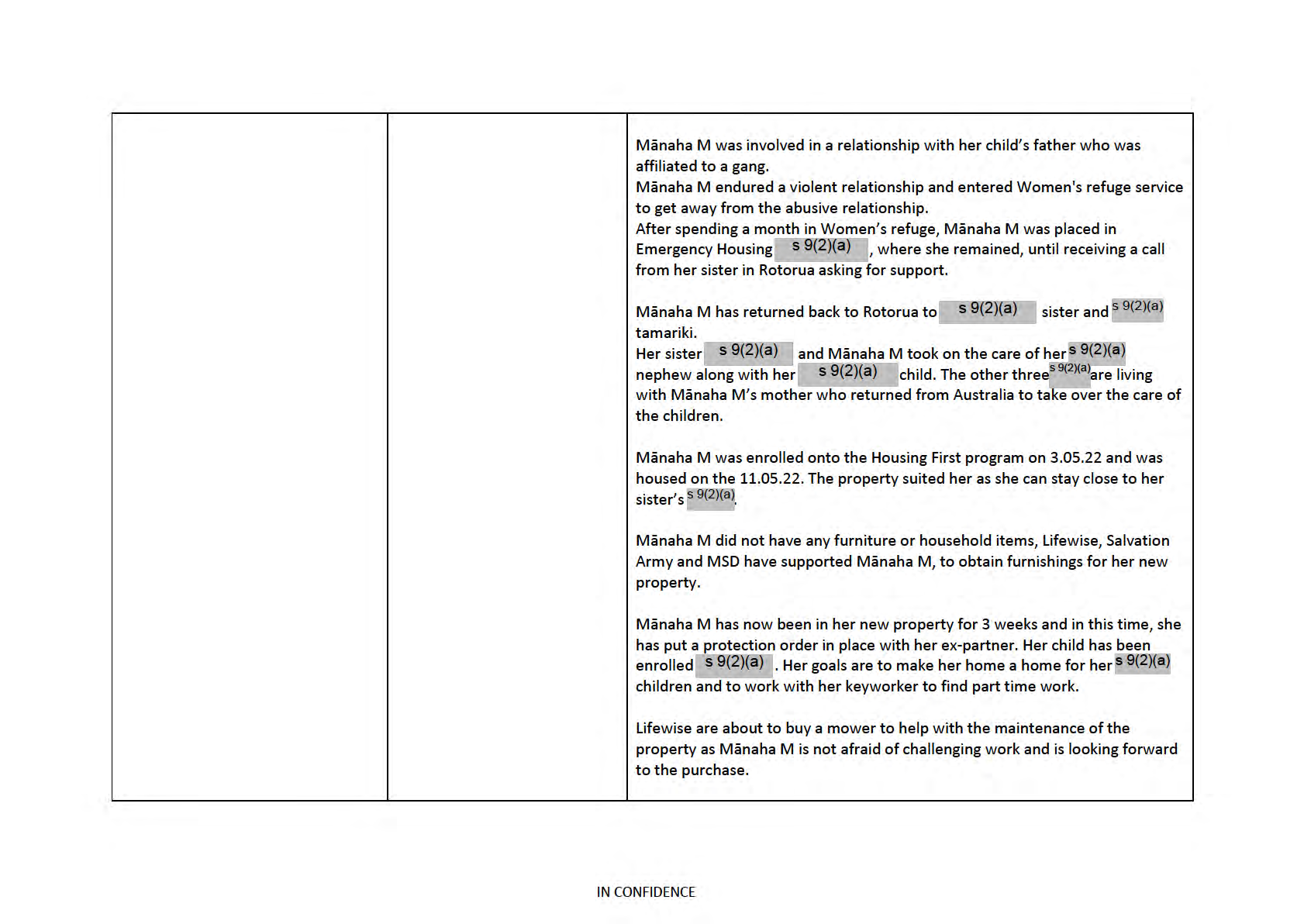
Reports are that Mānaha M has refrained from doing drugs and is committed
to reaching her goals.
Fol ow up: Refernce Mānaha L (March 2021)
Mānaha L – Male client
Mānaha M – Female partner
s 9(2)(a) amariki
Mānaha L in this case study is a 25 year Māori male of s 9(2)(a)
descent.
As a continuation of previous report we have noticed Mānaha L has recognised
his own value and has embraced working and is looking to grow within his
industry.
Currently he is working
s 9(2)(a)
, but he
is in the process of applying for a new role which will provide him with more
perpermanent work. This is an indication Maanaha L is wanting to work full
time and is enjoying being employed and wanting to excell in his career.
Mānaha L has sustained employment for over 12 months, is expressing his
aspirations to become a supervisor and eventual y run his own business.
His passion has influenced Mānaha M who has started casual employment
with Mānaha L.
Their children are enrolled and attending
s 9(2)(a)
School and seem to
be enjoying their experience.
The couple. Are receiving social support services from Manaaki ora and this
seems to be working well.
Keyworkers have been working with both Mānaha to manage their new
income and the impacts of this income on their benefit and social housing rent.
Mānaha L is working towards fulltime employmet and coming off the benefit.
The couple are also booked in to do the financial literacy workshops in the
future.
IN CONFIDENCE
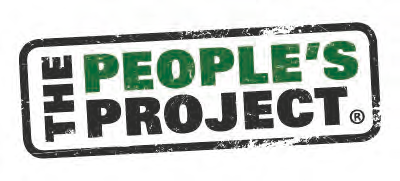 HUD - Quarterly Report – TPP Hamilton
HUD - Quarterly Report – TPP Hamilton
Period: 1 April 2022 to 30 September 2022, due 5th of October.
New clients - Housed and initial assessments.
From 1 April 2022 to 30th September 2022, a total of 70 housing outcomes were
achieved, involving 74 adults and c
s 9(2)(a hildren. The housing outcomes were made up of
40 Housing First outcomes and 30 Rapid Rehousing outcomes. 27% of housing
outcomes were in Kainga Ora properties.73% were in private rental properties or
other types of housing. From the start of operation in August 2014, 1,199 housing
outcomes had been achieved involving 1,657 men, women, and children.
On average, staff triage 3 new enquires per workday, speaking to between 45 and 70
new people per month. Between April and September, initial assessments were
completed with 147 new people, 95 new Housing First clients and 52 Rapid Rehousing
clients.
At the end of September, there were 252 active program users, made up of 207
Housing First clients (68 needing housing and 139 housed) (Note: we are contracted
to work with 170 Housing First clients) and 45 Rapid Rehousing clients (27 needing
housing and 18 housed). Rapid Rehousing clients have less complex contributing
health and wel being issues and require less than one year’s ongoing support once
housed.
The average vulnerability score for the 147 new clients was 8/17 denoting a high
vulnerability requiring a Housing First response. 51 clients scored between 10 and
16/17 on this assessment tool, which indicates a very high level of immediate risk and
acuity.
In additional to the 252 active clients, a further 23 clients are being supported in the
community by the Assertive Outreach team. These people are living in their cars or
are rough sleeping in the community and have yet to register with the service for
support. Outreach is an important part of building a trust relationship, between the
client and the service.
Staff levels remain at 22 fulltime staff. At the end of September, caseloads were
approximately 1:16 per case manager, with Team Leaders holding a small caseload of
up to 6 clients.
1 | P a g e
IN CONFIDENCE
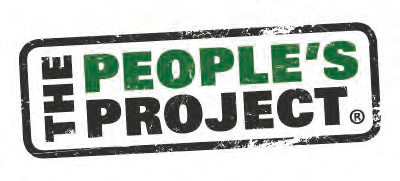
s 9(2)(a)
Direct support and facilitated access to support people’s identified need.
Connections week
Figure 1- 5.30am briefing before Outreach - Connections week 2022
Connections week is an annual by-name count of those who are rough sleeping,
sleeping outside, living in their cars, and in uninhabitable circumstances in Hamilton.
The week is an opportunity to connect people who are homeless with services and
support they may need. This is a collaboration between The People’s Project, Hamilton
City Council’s City Safe team, and other Wise Group employees. Funding was provided
by Te Puni Kokiri.
Over three days from Tuesday the 28th of June to Thursday 30th June 2022, 24 The
People’s Project staff, 6 Hamilton City Council City Safe members and staff from other
Wise Group organizations complete outreach from 5.30am. Using eight service
vehicles, we were able to cover all of the known places that The People’s Project’s
Outreach teams and City Safe knew people had been either rough sleeping or sleeping
in their cars.
2 | P a g e
IN CONFIDENCE
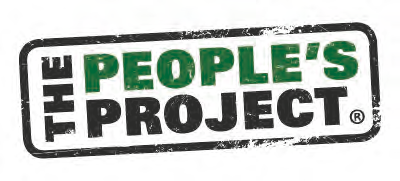
Overal , 13 people were found rough sleeping and 12 people were found sleeping in
11 cars. No families or youth (< 18 years old) were found rough sleeping or living in
their cars. Compared to the last two Connections Week campaigns in 2019 and 2021,
the count revealed a reduction in the number of people unsheltered in Hamilton.
Twelve of the people living unsheltered were already known to The People’s Project
and City Safe teams. This speaks to the effectiveness of the new The People’s Project
assertive outreach team established in April 2021. This team conducts regular early
morning outreach, connecting with people rough sleeping and living in their cars in
the community.
Occupational Therapist
On the 8th of August, our service welcomed back returning staff member Carly, to a
new position as our dedicated onsite Occupational Therapist. Her role is to complete
assessments once people are housed to determine if they have the ability to live safely
and successfully in their homes. She will also complete other wellbeing assessments,
as needed.
Having a qualified OT on staff has already positively impacted health outcomes for one
client who has recently moved into their Kāinga Ora home. An assessment was
completed in relation to property modifications needed to accommodate various
mobility challenges. Kāinga Ora were wil ing to accept the recommendations from our
onsite Occupational Therapist. This fast tracked the normal process for referral for OT
assessment which involves referral to other services through a GP, assessment around
meeting service criteria and long waits on waitlists before being assessed.
Over the next few months, we will collect details about the support needs identified
by our OT. We wil use this information to inform and further refine our practices.
s 9(2)(a)
Figure 2: Rough sleeper - Hamilton East - Aug 2022
3 | P a g e
IN CONFIDENCE
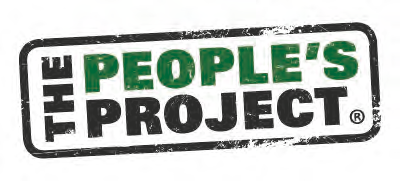
Successes (big and smal ) showing how far a person/household
has come and the interventions and activities linked to these.
Workwise
From our research, we know that as many as 70% of people who engage with our
service have worked before, with as many as 40% having held steady jobs. Once
housed, helping those who are ready to get back to work is an important next step in
people’s reintegration back into our communities.
Workwise is a supported employment organization which is part of the Wise Group.
Workwise support people who are facing personal or health chal enges to return to
and stay at work, using an individual placement and support (IPS) model. They have a
broad understanding of how to ensure people facing mental health and problematic
substance use issues, and who have experiences homelessness, are supported to gain
and maintain employment. The People’s Project Hamilton has contracted two
Workwise employees to support those in our service wishing to get back into work.
In the quarter from April 2022 to June 2022, eight clients working with The People’s
Project have been referred to Workwise for support. That bought the total number of
TPP referrals to 42 for the contracting year from the 1st of July 2021. Over the same
quarter, eight people began working, making a total of 30 people employed from all
referrals. This is a 71% placement rate, which is considered a very high by Workwise.
Sixty percent of those referred who get into work have jobs working 30 hours or more
per week. Helping people prepare to work is also part of Workwise’s support. This can
include supporting people to get licenses and helping people to complete training.
The combination of being stably housed and supported to sustain their housing, as
wel as being stably employed and supported to sustain their employment is a
powerful combination. As one person commented:
“I’m living the dream. I have an awesome job, awesome boss, awesome home, and
people that care about and support me”.
Trends/Impacts that have influenced housing outcomes.
Characteristic from initial assessments
Recently, there has been an increase in the number of people engaging with high and
complex needs. This includes those with comorbid health and wel being issues,
extensive corrections histories, and long stretches in emergency housing. To follow
are a few characteristics from initial assessments carried out between the 1st of April
2022 and the 30th of June 2022.
4 | P a g e
IN CONFIDENCE
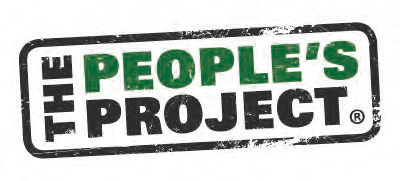
Primary living situation last 3 months:
• 6 - rough sleeping
• 13 - emergency housing
• 7 - vehicle
• 15 - couch surfing
• 4 – short-term accommodation (e.g. back packers)
Main contributing factors in becoming homeless:
• 3 - problematic substance use
• 2 - domestic violence
• 4 - mental health issues
• 7 - prison release
• 22 - relationship issues
Physical health issues:
• 14 - head injury
• 5 - hearing impairment
• 1 - diabetes
• 2 - cancer
• 1 - paraplegic
Mental Health issues
• 23 - anxiety (21 of these also suffered with depression)
• 8 - post traumatic stress disorder
• 5 – bipolar disorder
This level of complexity necessitates careful management of caseloads. Clients with
high and complex needs often take additional persistence and resilience on the part
of the case manager in supporting people to help find and sustain permanent
tenancies, and to engage with necessary health and wel being supports.
Matariki
TPP teams in Hamilton and Tauranga gathered by the water for a ceremony to
remember and farewel the 12 people they have worked with in the past year who
have passed away.
Surrounded by karakia and waiata, harakeke (flax) flowers were placed on a small raft,
each flower representing a person who had passed away. Additional flowers were
added by staff who lost a loved one in the past year. The names of the people were
called, and the rafts were released.
5 | P a g e
IN CONFIDENCE
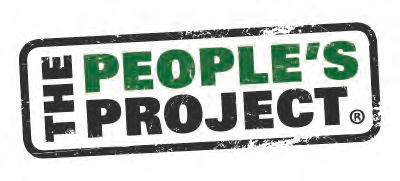

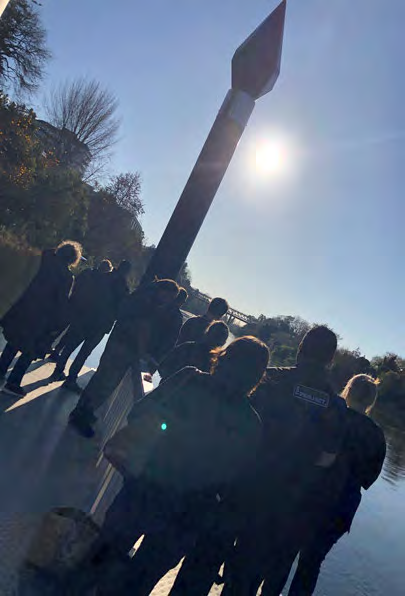
General manager, Kerry Hawkes, shared this message during the Hamilton ceremony:
“Death as we have learned over the last 8 years is a part of the TPP service. This ceremony is important for TPP staff, we often do not get to be involved once a
person has passed away. Quite rightly family take over, however this sometimes takes
away our opportunity for a goodbye, for closure. This is our opportunity for a goodbye. Take a moment to reflect, to feel sadness…it’s
hard and sad, and particularly when someone takes their own life we are left with more
questions than answers. What we always need to remember is how much life has gone before people turn up
at our doors, we cannot overcome a lifetime of trauma in the short time (relatively
speaking) we have with people. Damage has been done, bodies have been mistreated,
medical treatment has been rare and chronic illness already exists in many cases.
Sometimes the difference we make is not enough, but it does make a difference. As we launch the raft today with the flowers that represent someone you have worked
with, I want you to reflect on the hope you gave them, the kindness you showed them
and the little bit of difference you made. Feel proud. Six out of the seven people we
farewel today (in Hamilton) were living in their own homes.” After the ceremony, both teams headed back to their offices to enjoy a hāngī prepared
by their col eagues and turned to focus on the future – the hopes, dreams and
aspirations for the coming year.
Figure 3Matariki raft with Harakeke flowers on the Waikato River - 23 June 2022
6 | P a g e
IN CONFIDENCE
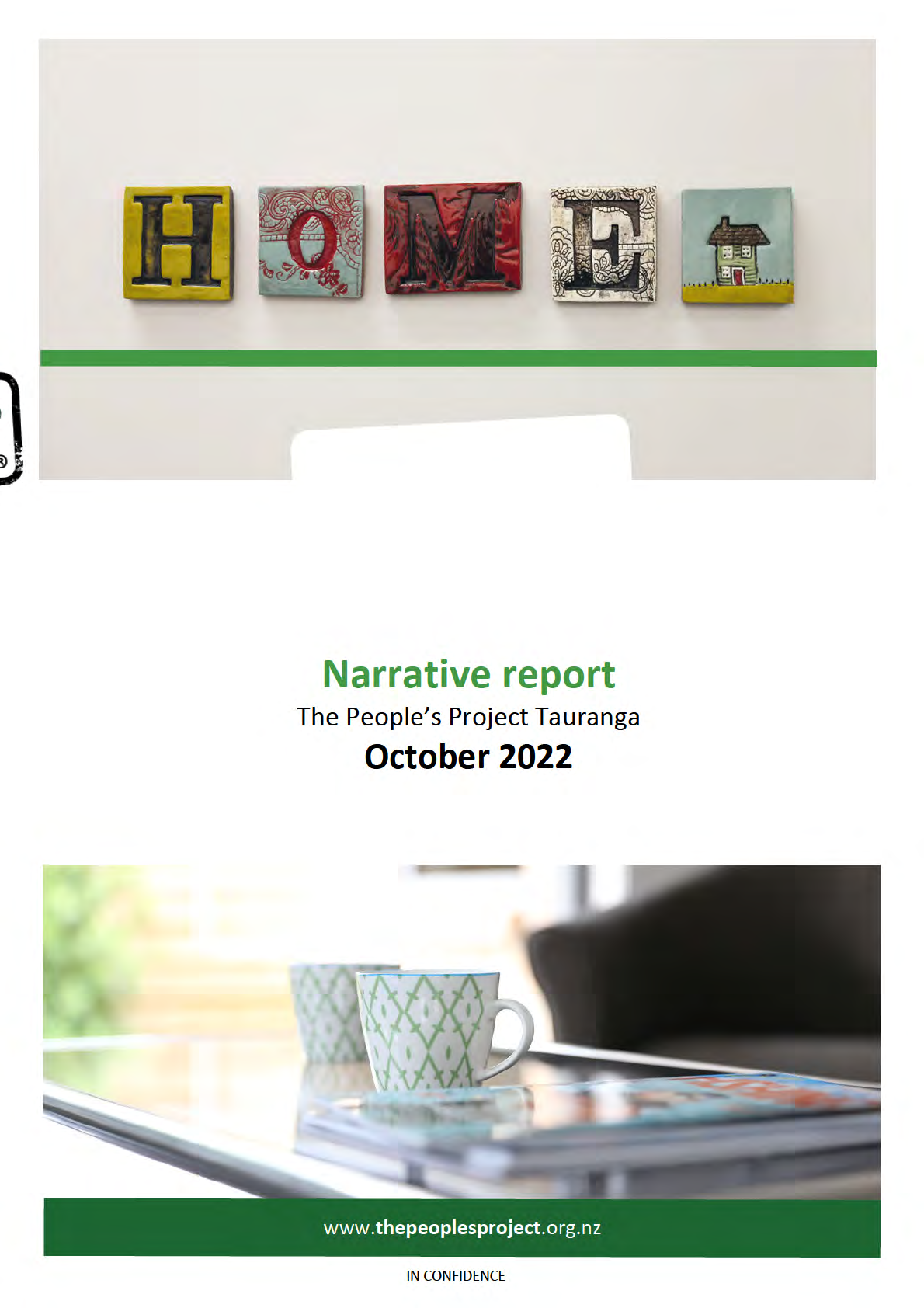
2
Table of Contents
What has your experience been? .................................................................................. 3
Direct support and facilitated access you provided to address people’s identified
needs: ............................................................................................................................. 8
Successes (big and smal ) that show how far a person/household has come and
Housing First interventions or activities linked to these: .............................................. 9
IN CONFIDENCE
3
What has your experience been?
Our clients
From June 2018 to 30th of September 2022, the fol owing have been achieved:
• 174 housing outcomes (some clients have had more than one tenancy)
• 111 people housed
• 759 triages.
Our clients continue to work through the issues that led them to homelessness, and this is
reflected, as expected, in our housing outcomes. We are committed to making each tenancy
a learning and growing experience for us and our clients.
The increase in triages we have seen is due to the magnificent work of our newly formed
Outreach Team and we are enjoying a bustling TPP office again and meeting new people
who need support.
At present we have sixty (60) individuals waiting for housing with most of these sitting on
the Social Housing Register between A17-20. Some have been waiting for 4 years without
success.
The complexity of our clients dictates the demand in our day-to-day mahi and informs the
make-up of our Case Managers caseload. We do our best to anticipate this using the
evidence-based assessment tool the Vulnerability Index – Service Prioritization Decision
Assistance Tool (VI-SPDAT), so we have a good understanding of client’s vulnerability levels.
We see a high level of complexity in Housing First (HF) clients:
• Average HF client’s score is 9.3 denoting a high vulnerability requiring a Housing First
response. [Average of all HF clients TPP has worked with/are working with].
• Number of HF clients scoring 10 and over on VI-SPDAT are 84 which indicates a very
high level of immediate risk and acuity. [84 individuals out of the 172 individuals TPP
has worked with/are working with].
During the April 2020 lockdown, we were tasked with placing the unsheltered homeless into
Motels which were funded by Ministry of Housing and Urban Development (MHUD). This
came with significant challenges and some benefits, but ultimately is something we wish to
move away from to ensure validity to our Housing First Model.
We have worked hard to phase out of the COVID motels. We placed and supported close to
60 people from April 2020 and subsequent months. We moved some into housing here, or
to other areas and some others were evicted from motels due to anti-social behavior.
Now, 2 years on, we have 14 clients residing in one remaining COVID motel. We would have
placed all clients into housing if the housing had been available.
Supporting clients living in congregate style accommodation, such as motels, has been
particularly challenging. Supporting a large group of people with high and complex needs in
these environments, whilst balancing the requirements of the privacy act with issues of
health and safety, has been, and continues to be difficult.
IN CONFIDENCE
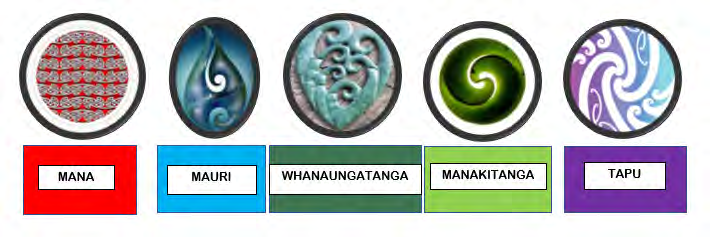
4
Our team
We have expanded our team and now have three (3) Team Leads, each with two (2) Case
Managers in their teams, and we are currently recruiting for another Case Manager which
with our Front of House, Clinical Lead, Workwise Employment Consultant and Manager,
brings our team to fourteen (14). We are thoroughly enjoying the larger office space here at
Marino House at 63 Second Avenue and the resources we need to awhi our clients and other
service providers with a welcoming space is essential to our mahi. Our clients are starting to
feel comfortable in this new space and some often stay for several hours, using the client
computers and speaking with different staff as they pass through. We continue to work to
ensure the environment is welcoming and we are grateful to our Front of House support for
the mahi she does in this area.
Embracing Te Reo Māori and Tikanga Māori
Local and national research and our own client data confirms that Māori continue to be
disproportionately represented among people homeless in New Zealand as well as among
TPP clients. Therefore, TPP is committed to implementing a Kaupapa Māori framework
based on Tikanga principles into our everyday practice. TPP’s cultural advisor, Chris Henoa, is
based in Hamilton TPP and has developed and is now implementing a Māori competencies
program for all staff. TPP staff have identified 5 Pou (pillars) that uphold our way of working.
These are represented in figure 1.
Figure 1 TPP Tauranga’s Pou
Chris has developed a Waiata specifically for TPP which reflects elements of a Housing First
approach and values TPP wishes to foster among its staff. Led by Chris, staff are learning their
pepeha, various karakia and appropriate words and phrases to be able to follow tikanga when
meeting with Māori staff, clients, and others in our community. This approach wil help us take
care of our clients in a way that supports and acknowledges their cultural. The phrase “He aha
ake” means “whatever it takes”. This phrase embodies the approach that each team member
takes supporting our clients.
Impacts of COVID on Service Provision
The resurgence of COVID-19 in the community earlier this year impacted staffing levels. Each
week, many staff were at home self-isolating as house-hold contacts or recovering from a
COVID infection. Reduced staffing put a significant strain on service delivery. The ongoing
stressor of the presence of COVID-19 in everyone’s lives, along with the multiple impacts,
cannot be ignored. Staff wellbeing has been front of mind for us even as we move into a new
normal phase. The recent return to ‘normality’ has been a relief for many, though we
IN CONFIDENCE
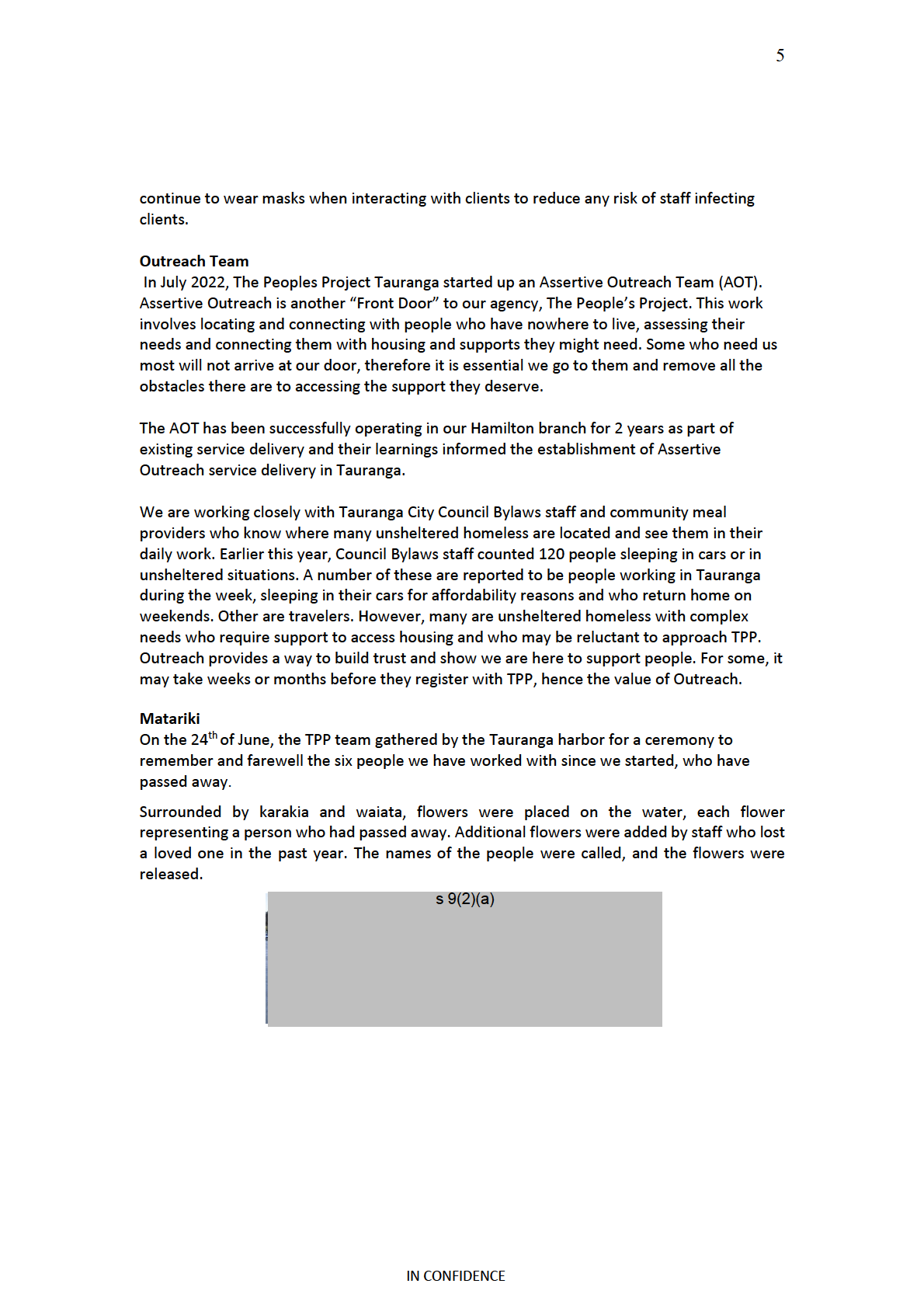
6
s 9(2)(a)
General manager for TPP, Kerry Hawkes, shared this message to both Hamilton and Tauranga
TPP services:
“Death as we have learned over the last 8 years is a part of the TPP service. This ceremony is important for TPP staff, we often do not get to be involved once a person has
passed away. Quite rightly family take over, however this sometimes takes away our
opportunity for a goodbye, for closure. This is our opportunity for a goodbye. Take a moment to reflect, to feel sadness…it’s hard and
sad, and particularly when someone takes their own life, we are left with more questions than
answers. What we always need to remember is how much life has gone before people turn up at our
doors, we cannot overcome a lifetime of trauma in the short time (relatively speaking) we have
with people. Damage has been done, bodies have been mistreated, medical treatment has
been rare and chronic il ness already exists in many cases. Sometimes the difference we make
is not enough, but it does make a difference. As we launch the raft today with the flowers that represent someone you have worked with, I
want you to reflect on the hope you gave them, the kindness you showed them and the little
bit of difference you made. Feel proud. Six out of the seven people we farewel today (in
Hamilton) were living in their own homes.”
Training and Connections
As discussed in previous reports, all our training in the past two years, had been moved
online due to COVID restrictions. While we have stil retained the effectiveness of on-line
training, this year has seen a return to face-to-face and in an industry where networking is
essential to advocate for our clients, and the relationships we build with other providers are
how we achieve results, we are thoroughly enjoying getting ‘out and about’ again. We have
been able to attend the fol owing training/networking events:
• Kainga Tupu Networking Event
• Housing First Training
• Here to Help You Networking Event
• Cultural Connections Workshop
• First Aid Training
• Outcome Star/Outcome Star Goal Setting Training
• St Vincent De Paul Community Connections Group
• Inspiring Communities Development Workshop
• AOD (Alcohol and Other Drugs) Networking Forum
IN CONFIDENCE
7
• Privacy Workshop
• Te Reo Competencies
• Understanding Mental Health
Housing
The rental market continues to increase in its unaffordability, and the competition for those
that are within our client’s reach is fierce. We continue to advocate strongly and tirelessly
for our clients in the private rental space, and have had some success, however, at $420 a
week for a studio apartment with a shared laundry and utility bills on top of that, it means
our clients are struggling significantly to afford the basics, even with the full extent of Work
and Income (WINZ) support available.
The housing supply in Tauranga continues to be the main source of the problem as we are
needing one to two-bedroom flats for our client group and the development of such
properties is slow.
We have appreciated strengthening our relationship with Accessible Properties Ltd (APL).
TPP’s considered and col aborative approach to housing TPP clients in APL properties has
seen success in placements. The approach of TPP providing profiles of clients seeking
housing to APL for manual placement has proven a good approach – this allows matching
individuals to suitable properties.
TPP is currently working on the same approach with Kainga Ora and TPP hopes to place
clients in the old properties being redeveloped at this time as well as in new builds in coming
years.
Workwise
From our research, we know that as many as 70% of people who engage with our service
have worked before, with as many as 40% having held steady jobs. Once housed, helping
those who are ready to get back to work is an important next step in people’s reintegration
back into our communities.
As mentioned in our previous report, TPP contracted a Workwise employment consultant to
support those in our service wishing to get back into work, and we were joined by this
Consultant in September 2021.
Workwise is a supported employment organization which is part of the Wise Group. Workwise
support people who are facing personal or health challenges to return to and stay at work,
using an individual placement and support (IPS) model. They have a strong understanding of
how to ensure people facing mental health and problematic substance use issues, and who
have experiences homelessness, are supported to gain, and maintain employment.
Helping people prepare to work is also part of Workwise support. This can include supporting
people to get licenses and helping people to complete training.
Having an employment consultant integrated into TPP’s team makes access much easier for
clients as the trusting connection has already been made with TPP staff.
Even starting the mahi in a lockdown and continuing through a COVID surge, outcomes
achieved have surpassed our hopes and expectations, thanks to our employment
consultant’s and the TPP team’s flexibility and perseverance.
IN CONFIDENCE
8
A key Housing First principle is client led decision making, so it’s good to see several clients
take up training and employment. Some of the results achieved from September 2021
through to end August 2022:
• 26 employment and training outcomes
• Maōri are 56% of tāngata whai mahi accessing service and 58% of those securing
employment outcomes
• Four TPP clients have moved off a WINZ benefit and into full time paid employment
• An 89% conversion rate from referral to entering service
An 89% conversion rate from referral to entering service is high and noteworthy. It shows
the quality of service provided to clients in terms of timeliness, suitability, warmth, and
teamwork. Integration between TPP and Workwise has gone from strength to strength with
teamwork around clients crucial to successes achieved.
Employment taken up by clients include laboring, orchard work, trolly collection, removals
assistant, brush hand/painter, forklift driver, driver with waster company.
The following is a good news story from our EC:
“A client has been supported into his own accommodation by TPP and has been working
ongoing with the Workwise Employment consultant to gain employment. The client has
successfully completed 6 months of full-time employment on 7th September 2022. By
working col aboratively together, ongoing support has enabled the client to thrive in his
employment as he is settled and feels safe in his new whare. Together both the CM and EC
took the client out for a celebratory coffee on his lunch break where we congratulated the
client on being 12 monthss 9(2)(a)
We both stated how proud we were of him for how far he
has come and commented on how wel he is looking. The client has gained new confidence
in his abilities and is in discussions with his employment consultant about utilizing his skil s to
go for better jobs to get the future that he imagines it to be. The sky’s the limit �”
Access to Mental Health Support
We have been working steadily to improve our relationship and connection with mental
health services in the Bay of Plenty and building our network with the Social Workers and
nursing staff in Te Whatu Ora Mental Health Inpatient Ward, the Nursing Case Managers and
Psychiatrists in Community Mental Health (CMH), both North and South sectors, and the
wider body of staff.
This has meant we are having success when cal ing for support with our clients and while is
unfortunate that often the response is due to our relationship with these individuals rather
than the overwhelming need for mental health support, we continue to strongly and
steadfastly advocate for our clients and work to strengthen the relationship between the
provider and the client. Often, we can see the clients care and treatment from a different
perspective and having built trust with CMH and our clients, we now work collaboratively
with our clients to achieve good outcomes.
IN CONFIDENCE
9
Direct support and facilitated access you provided to address people’s
identified needs:
We mets 9(2)(a)when our Tauranga service opened in 2018. He was housed at that time but
he reported difficulty with his neighbors and he came to our office to tell us about his issues.
s 9(2)(a)presents as a person who may have had a head injury and along with his struggles with
an addiction to alcohol and all this entails it was very difficult to talk through his situation
with him. We suggested he seek advice from a housing clinic at Community Law.
He started to engage with us again in early 2022 as he was homeless and again his alcohol
use limited the effective interactions, we were able to have, however, a Housing First
approach to his management meant that we could remain in his life and assure him we were
here to support him. We continued to welcome him into the office and put firm boundaries
in place to keep us and him safe. Eventually
wa
s 9(2)(a)
nted to engage more and started to
seek support. We offered him a room in one of the COVID MHUD motels to provide some
stability for him to progress with his goals of housing. At first, he refused this temporary
accommodation. However, some weeks later he agreed, and the Housing First model
allowed us to tailor this support specifically for
a
s 9(2)(a) nd we were able to use incentives to
achieve this progress.
Since being in the motel and having a stable environment,
h
s 9(2)(a) as agreed to a social
housing assessment and thereby secured himself a spot on the MSD Housing Register, he
has reduced his drinking so he can abide by the rules the motelier put in place. He is
engaging well with TPP Case Managers, he has mowed the lawns at the motel and has
offered to paint the fence to show his appreciation to the Motelier for having him there. We
can see evidence that he is starting to see his value and worth as he asks for better for
himself.
h
s 9(2)(a) as engaged with WINZ to seek clothing support and is starting to show an
interest in his nutrition and wanting to eat better.
Al these successes have come about because
h
s 9(2)(a) as been al owed to be the expert in his
journey and has been a part of the HF approach to housing. This means his strengths are
celebrated and harm reduction is the focus rather than
n
s 9(2)(a) eeding to be ‘better’ before
he deserves a chance.
Successes (big and small) that show how far a person/household has
come and Housing First interventions or activities linked to these:
One of our clients
,
s 9(2)(a) a 60yr old gentlemen with multiple health and addiction issues, has
been working with us since June 2021. He had been homeless for approximately 5 years,
sleeping rough on the street for most of those years
h
s 9(2)(a) as struggled with housing due to
his mental health and addiction issues, but also because he values looking after others and
this has often led him to lose tenancies due to extra visitors and the complications they
bring.
IN CONFIDENCE
10
wo
s 9(2)(a)
rked together with his case manager and secured a tenancy which he sustained for 7
months. This was lost due to the same ongoing complications
h
s 9(2)(a) ad previously faced
where he wanted to support others in need and struggled with their ongoing issues.
a
s 9(2)(a) nd
his Case Manager continued exploring options and looking into the reasons for the previous
eviction and how he could prevent this from happening again. They then managed to secure
a private rental in April of 2022. This tenancy started out much the same as the others and
in
s 9(2)(a)
vited another homeless individual with multiple mental and physical health conditions
to stay as she was extremely vulnerable on the streets; this individual was also a client of
ours. His case manager worked closely with him to identify potential issues and focusing on
his strengths and the importance of his wel being, all the while upholding our Housing First
values of client-led decision making and acknowledging that
w
s 9(2)(a)
as the expert in his
journey. After a few tumultuous weeks,
c
s 9(2)(a) oncluded that having this guest to stay was not
going to be sustainable and she would need to leave. We supported both clients through
this period to keep their relationship intact. We continued to look for ways to focus on s 9(2)(a)
strengths, those of nurturing and caring for others.
During this process,
an
s 9(2)(a)
d his Case Manager focused on one of the requests
h
s 9(2)(a) ad when
we initially triaged him; to have a cat. This focused on
v
s 9(2)(a) alue of nurturing and looking
after others and his case manager negotiated with the landlord to allow
t
s 9(2)(a) o have a pet.
We believed this would allow him to channel his nurturing gifts in a more sustainable way.
The landlord agreed and
w
s 9(2)(a)
as able to bring a new kitten home on the 30th of September
2022. We anticipate the normal and expected chal enges of pet ownership and see this as a
healthy way to continue to explore how s 9(2)(a) an utilize his strengths. This is a perfect
example of a Housing First approach.
k
s 9(2)(a) new from the start the issues he faced and the
complications he was struggling with, and he also knew the solution. It is an honor to work
alongside our clients to uphold the values of manaakitanga (respect and care) and
rangatiratanga (self-determination), and we can do this because of Housing First.
Lisa Marshal (Clinical Lead) and Simone Cuers (Manager)
The People’s Project Tauranga
IN CONFIDENCE
Housing First
Six monthly Narrative Report
November 2022
Trends or Impacts that influence Outcomes
What works?
Graduation is in ful swing and we are seeing whanau that we have been supporting for a long period
of time now strong and independent. This has been cause for reflection and celebration for whānau
acheivement.
Specialist team is growing and connections with whānau are beginning with promising results. We
have now appointed a Mental Health specialist.
Outreach has been showing promising results with growing connections with the community both
street homeless and businesses who look out for them. Outreach and Peer Support roles have been
successful in housing some of the rough sleepers in boarding houses and onto our Housing First
Programme. The role of Peer Support has been key in outreach. The knowledge of where whanau
may be residing eg under bridges, carparks etc is key insight as is how to approach and connect to
build a relationship and trust.
Training and development for the team to induct and upskil is being strengthened. Listening and
observing the ongoing trends of needs in the community is key.
New Team structures are now in place after feedback from staff, which look at the practice benefits of
mixing the complexity of clients in any one key workers case load in comparison to one key worker
having only high, or medium or low. . We have intentional y diversified the experience and skil s in the
team by bringing in Community Workers this has strengthened our client responsiveness.
We continue to develop our stakeholder relationships with Kaianga Ora (especial y in South Auckland
where we hold our greatest portfolio of Transitional Housing) who have a number of 1 and 2 bedroom
properties coming available. These are our single most difficult properties to find so this is great news
for our single whanau who often must wait significantly longer than families. As part of this mahi, we
are working with MSD on the reassessment of whanau ratings to ensure that whanau priority is
correct especial y with the average length of stay in TH being longer than the program was created for
– which is due to a housing shortage.
The partnership built through covid response with the ARDHB for popup health checks for whanau
and staff has continued fol owing on from covid response through the Covid Emergency Response
Motels.
What should you do more of?
We continue to review and adjust our practice, as the proportion of pre-housed whanau grows of
those we support.
Increased utilisation of the Housing First Backbone team for staff training opportunities as they are
specific to the mahi our team does.
[UNCLASSIFIED]
Increase our reflective practice through deeper analysis and utilisation of RecordBase outside of what
we know of how the system works. Invite RB to provide more staff training and systems insights to get
the most out of the data.
We hope to increase our numbers in the Peer Support role as we recognize the richness lived
experience brings to the mahi and service we provide to the community.
What doesn’t work?
Finding appropriate housing and support for homeless youth, singles and whanau with
disabilities/accessibility chal enges is difficult.
Accessibility to Mental Health support. We continue to face 6 month waiting lists for those with mental
health needs. We have brought on a specialist for acute client work and to train the trainer across our
staff team but this helps to support the mahi but does not replace the need for the key mental health
specialist teams that we need access to.
Having time periods on the support we are funded to provide to whanau, such as in Sustaining
Tenancy, Transitional Housing and Rapid Rehousing.
What improvements could you make?
Integration with Huia Mai (Kaupapa Māori) team for cultural training and understanding to better
support Māori clients. We are proud of our diverse team that means we can have a greater
connection with our diverse community. We are intentional about our Māori and Pacific community
which are over represented in our work. We can work Māori to Māori and Pacific to Pacific. We
continue to weave and embed kauapapa practices in al we do. We know this is a journey for all
providers, we continue to seek to do better in all our cultural practices.
Upskil ing staff for the current housing climate, mental health and budgeting skil s.
What opportunities have you identified?
Our Outreach role has been positively showing the effectiveness of added connection for our street
homeless whanau. Connections with TSA (The Salvation Army) Outreach has strengthened and has
been beneficial in picking up the areas that were It has opened the potential for further development
of the team and how they can be best utilised.
Direct support and facilitated access you provided to address people’s identified
needs:
VisionWest engage with a network of services that meet most of the needs of the Housing First
whanau who engage with Housing First. The network services are well established, such as:
• Whanau Waipareira
• Hoani Waititi Marae
• The FONO
• Family Works
• Family Action
• Salvation Army
• Police
• Law Society
• Kianga Ora
• Other housing providers – Cort, Compass
[UNCLASSIFIED]
Services Onsite at VisionWest that HF whanau have accessed
• Whanau Centre
• Education and Training
• Budgeting
• Pataka Kai
• Counsel ing
• MSD – Co locating on Visionwest campus
• Community law services
• Community Connectors
Services Offsite: HF Whanau have been supported to access
• AOD Programmes eg CADS, Salvation Army Bridge Programme, Pitman House
• Smoking Cessation (Fono)
• Parenting programmes (Family Start, Fono)
• Liase with other social housing providers (if whanau doesn’t meet HF criteria)
• Skil s update work programme
• Mental Health Services (Moko Services, Waimarino, Waiatarau Hospital)
• Doctors and Partnerships with mobile medical teams
• Anger Management course
• Work bridge
• Legacy and Man Up groups
• CAP Financial mentoring
• Woven Earth
Direct Support:
• Preparing and support for court cases
• Career planning
• Support for doctors’ visits
• Consultation with Housing First Registered Nurse, AOD Specialist and Counsellor.
• Accessing and sourcing furniture and clothing for HF whanau
• Support with facilitation of funerals of HF whanau, funeral grant, cultural guidance regarding
processes.
• Transport to WINZ appointments
• Advocacy to probation
• Support looking at tertiary training institutes
• Immigration Support
• Critical incidents
• Oranga Tamarkiki
Successes (big and small) that show how far a person/household has come and
Housing First interventions or activities linked to these:
[UNCLASSIFIED]
Graduation has been a wonderful time for both Whānau and Staff for reflection on the whānau
journey and the hope, aspiration and tools they go forward with.
One client who originally had been living with her partner in a van for approximately 10 years who
we met through being cal ed up by the petrol station they had been parked behind. Al of the
paperwork was fil ed with them on the street. It took a few months of regular connection with them
before they were ready to move into a house. The concerns had been for the gentleman who was in
his 80’s
s 9(2)(a)
and for her mental
wellbeing. We were able to connect them to an awesome GP who would come and visit them at the
van. The first house was so lovely however due to the female’s mental health complexities; they
didn’t fit so well into the surrounding neighborhood. The second home was a much better fit and
they settled well.
The Gentleman
s 9(2)(a)
after moving into the second property and the Support
Navigator assisted with everything required s 9(2)(a) .
The female is still in the same house. She is managing the rent and bills, as she has the whole way
through, she is managing the tenancy relationship, any of her needs through MSD and is living very
wel independently. We had the honour of graduating her just a month ago.
Another story of a younger tane who came to us through a referral through a local church. He was
living with mental health and anger challenges which became a barrier to healthy relationships. The
Support Navigator worked slowly but consistently with him and helped him into an anger
management course. He also started to volunteer doing gardening as a tool to manage the
emotional struggles. He has done wel and it gives him purpose each day. He has been offered
gardening jobs from others who have seen him work. When he graduated, he was walking around
our campus showing his certificate to whoever would take the time to listen. He was so excited.
[UNCLASSIFIED]
Document Outline
- Combined documents for release REDACTED.pdf

































